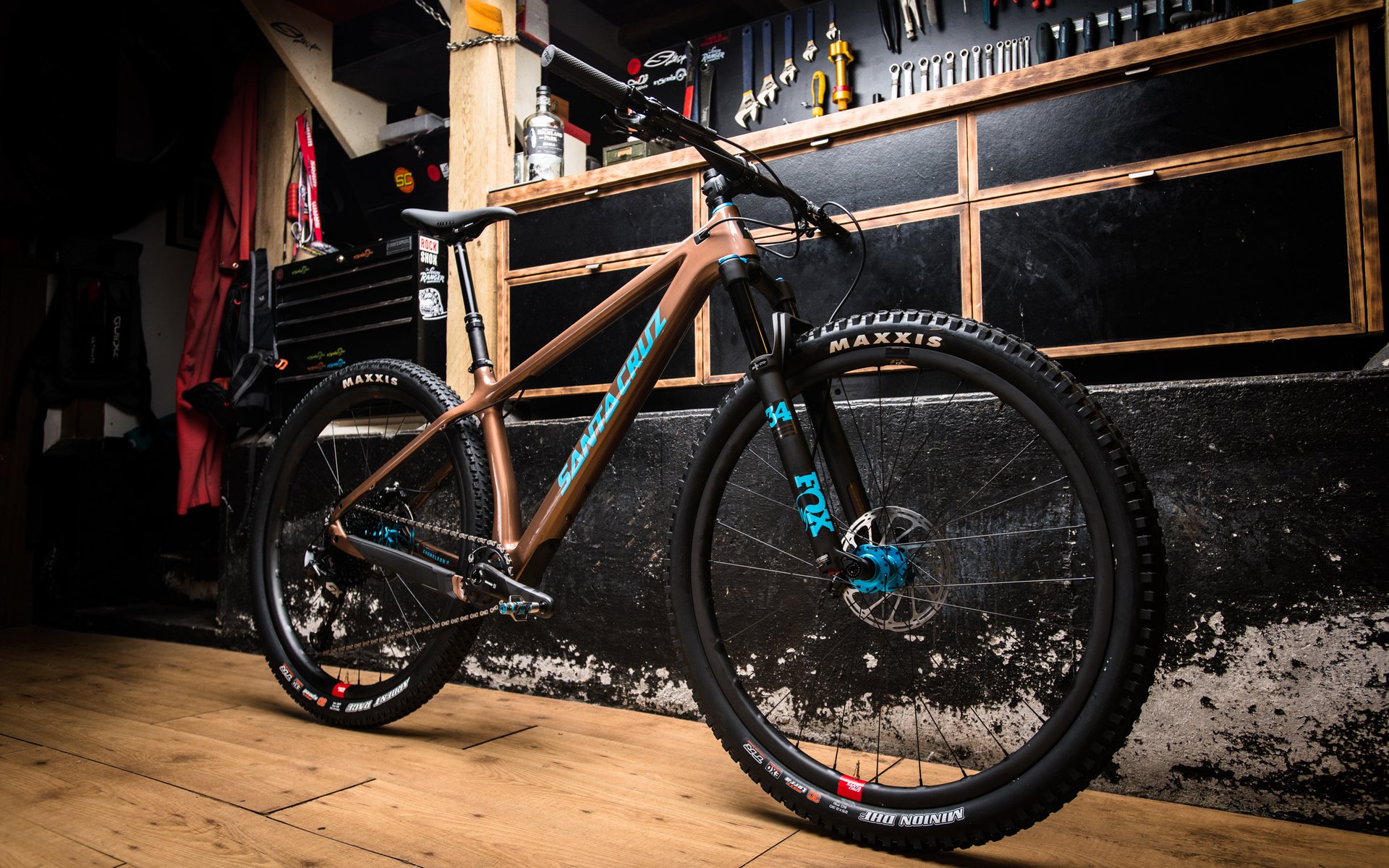
First Impressions/Rides
2019 Santa Cruz Chameleon Carbon
Carbon Chameleon
This bike is a total surprise. I really enjoyed my brief experiences with the aluminum Chameleon in 2017 so when Santa Cruz asked if I'd be interested in test writing the new edition I was all over it. Light, stiff in the right directions but strangely smooth for an aluminum frame, the potential to single speed it. It's quite legitimately a frame I would own.
Now I'm generally quite trepidatious about bike reviews. What if there's nothing interesting to say? Aside from debating personal preference and the odd obvious bomb on spec, or talking about value-for-dollar, I just don't find a lot of bikes very interesting. I had zero worries about that here.
Then I opened the box.
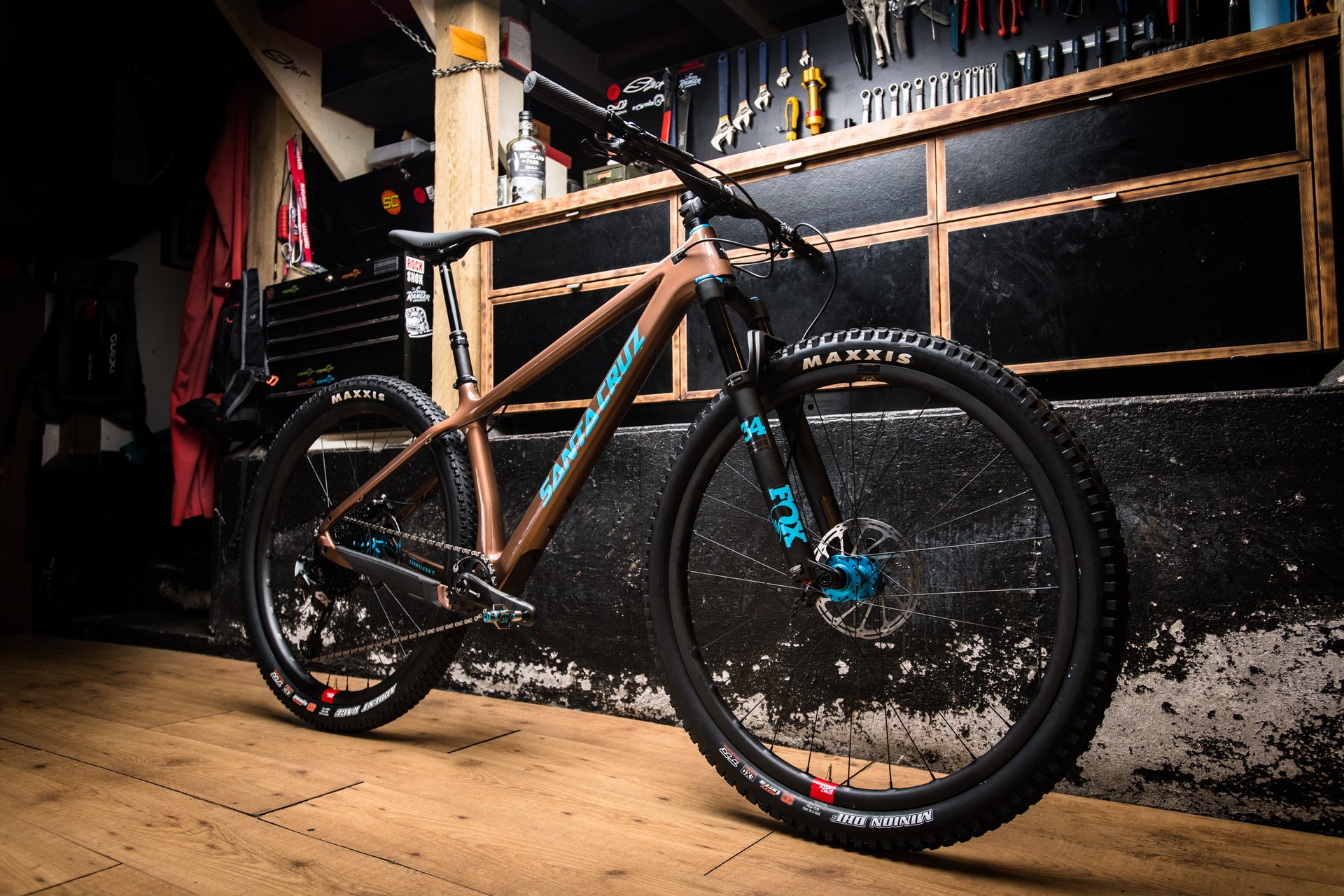
The new carbon Chameleon C. It's available in tw build levels in 27+ and 29" configurations and as a frame only option.
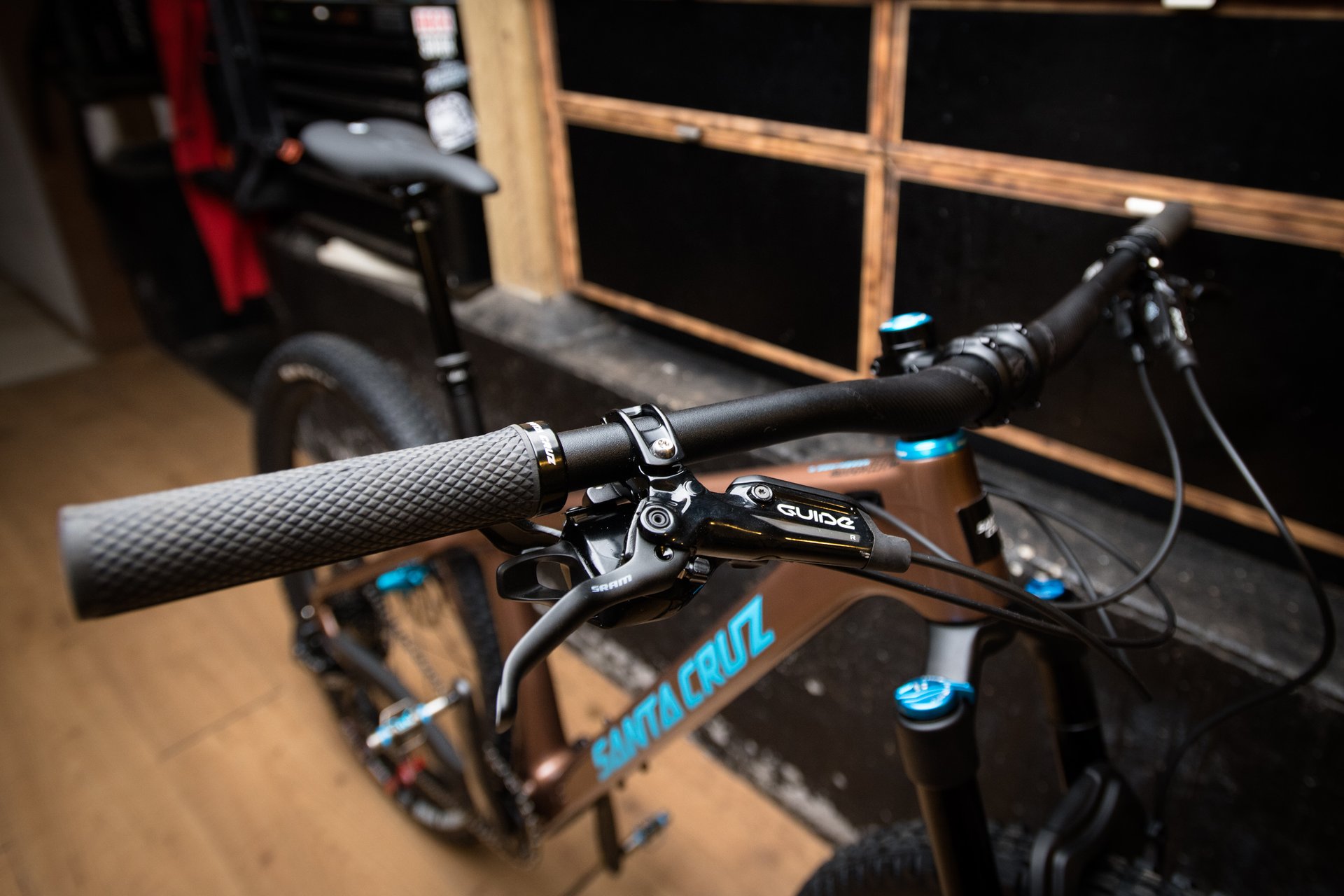
The SE Reserve shares a GX Eagle and Race Face Aeffect with the Chameleon C S and adds carbon rims, Hope hubs & headset, and carbon cranks.
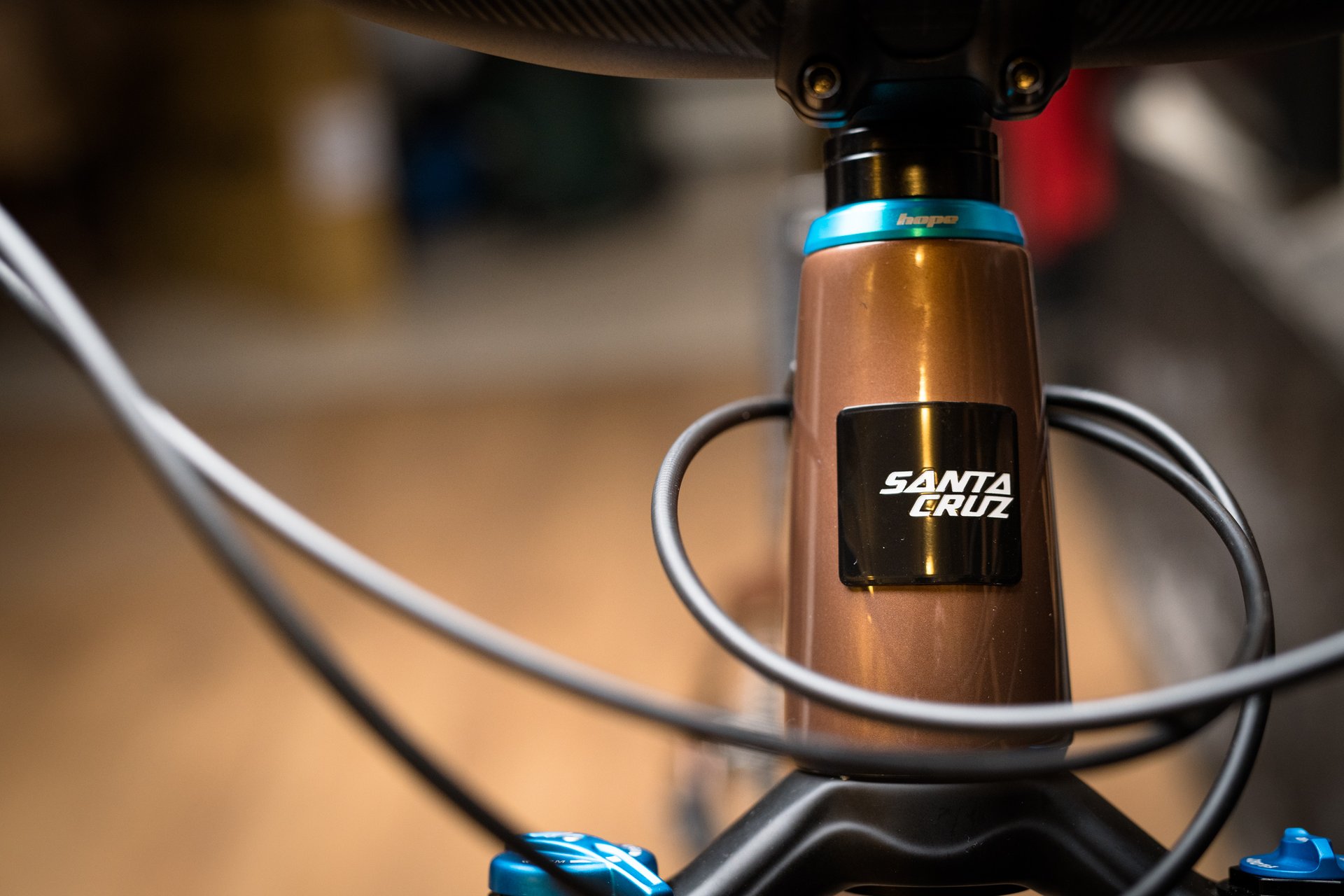
The turquoise-on-copper looks almost as sultry in person as these boudoir-esque Dave Smith photographs.
As the bubble wrap came away it was immediately obvious that this was a carbon frame. A really nice carbon frame. The complete bike with a GX build and, admittedly cheater weight, pedals is 12.16kg. Fair enough, that does feature carbon wheels and cranks but it's still impressive for the build.
This is the 29'er version of the higher end SE Reserve model of the Chameleon C. It actually shares a lot of parts with the lower priced S model with the addition of Santa Cruz's carbon wheels, SRAM carbon cranks, and Hope hubs and headset.
Yes, this is a 5700 USD carbon hardtail. There's also the 3800 USD 'S' level bike and, most interestingly to me, a frame only option at 1600 USD. For comparison sake, the 'S' level aluminum Chameleon is 3200 USD and it has SRAM Level brakes instead of Guides.
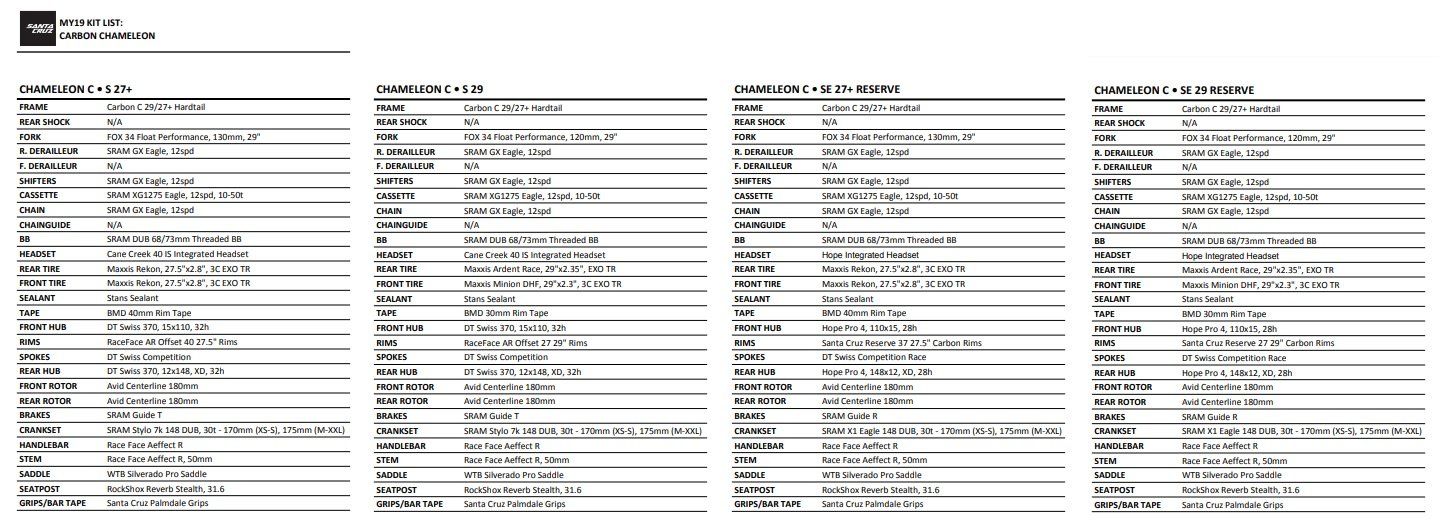
Build kits range from 1600 USD for a frame only to 5700 USD for carbon Reserve wheels and a GX build.
Sizing & Geo
With Santa Cruz having lengthened their bikes, I now find myself happily sandwiched between medium and large sizes where in years past I would always choose a large. For more aggressive technical descending I'd jump up to a 140mm fork on a large frame with a 40mm stem and bump the saddle forward. For a more Tech-C, XC, or adventure application a medium with a 60mm or even 70mm stem is perfect.
I've been riding the medium frame stock with the 50mm Aeffect R stem and Race Face bar and it's comfortable thanks to the relatively long effective top tube compared to Reach. There is a potential handling issue with going to a longer stem as Santa Cruz has gone with a trendy 44mm fork offset despite the Chameleon's relatively short Reach number.
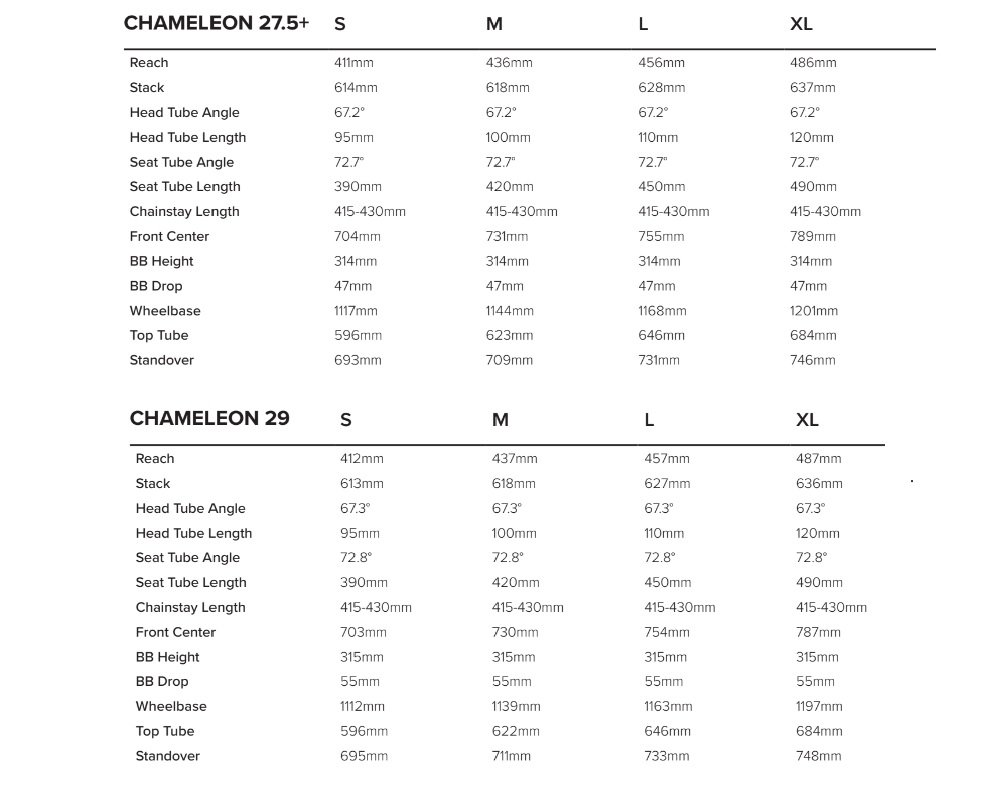
The geo chart sits in a more conservative realm but there are two points to consider. First, Santa Cruz is building a bike that can be used for XC racing, bike packing, single speed adventures, and ripping singletrack. That chameleon nature was never going to be well served by bleeding edge 62° head tube or 78°seat tube measurements.
It's also important to consider that when a hardtail is measured with the fork sagged, the reach increases and both the headtube angle and seat tube angle get steeper. Also, the seat tube angle doesn't slack out massively on steep climbs like a full suspension bike will. If you love bleeding-edge-steep seat angles this might not be the bike for you but I think the pedaling position - within the adjustable saddle range - is excellent for generating power and it's comfortable for long rides.
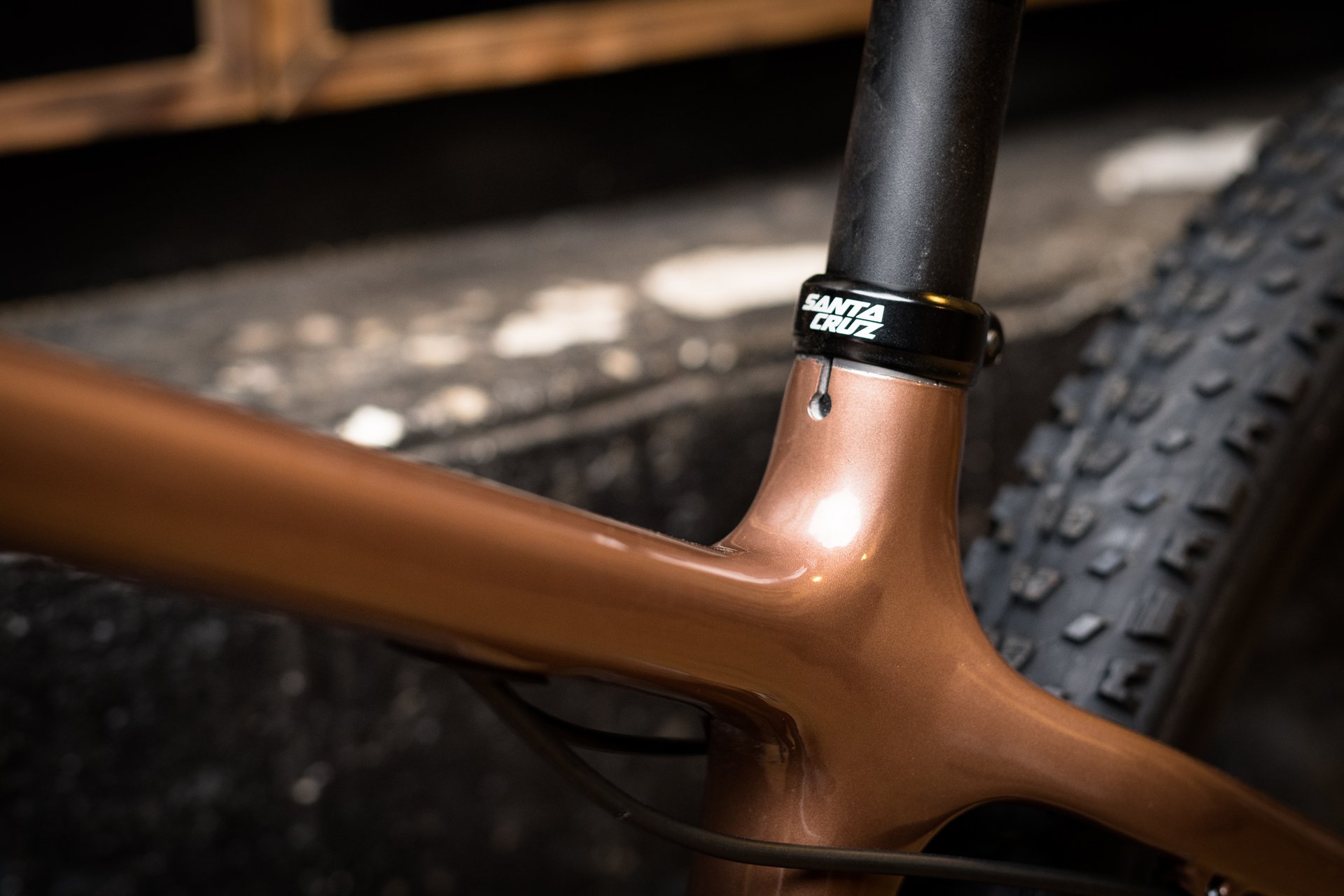
The organic frame details of the Chameleon are typically premium Santa Cruz fare. It's what I'd expect from a 1600 USD frame - but you can certainly pay notably more and get less.
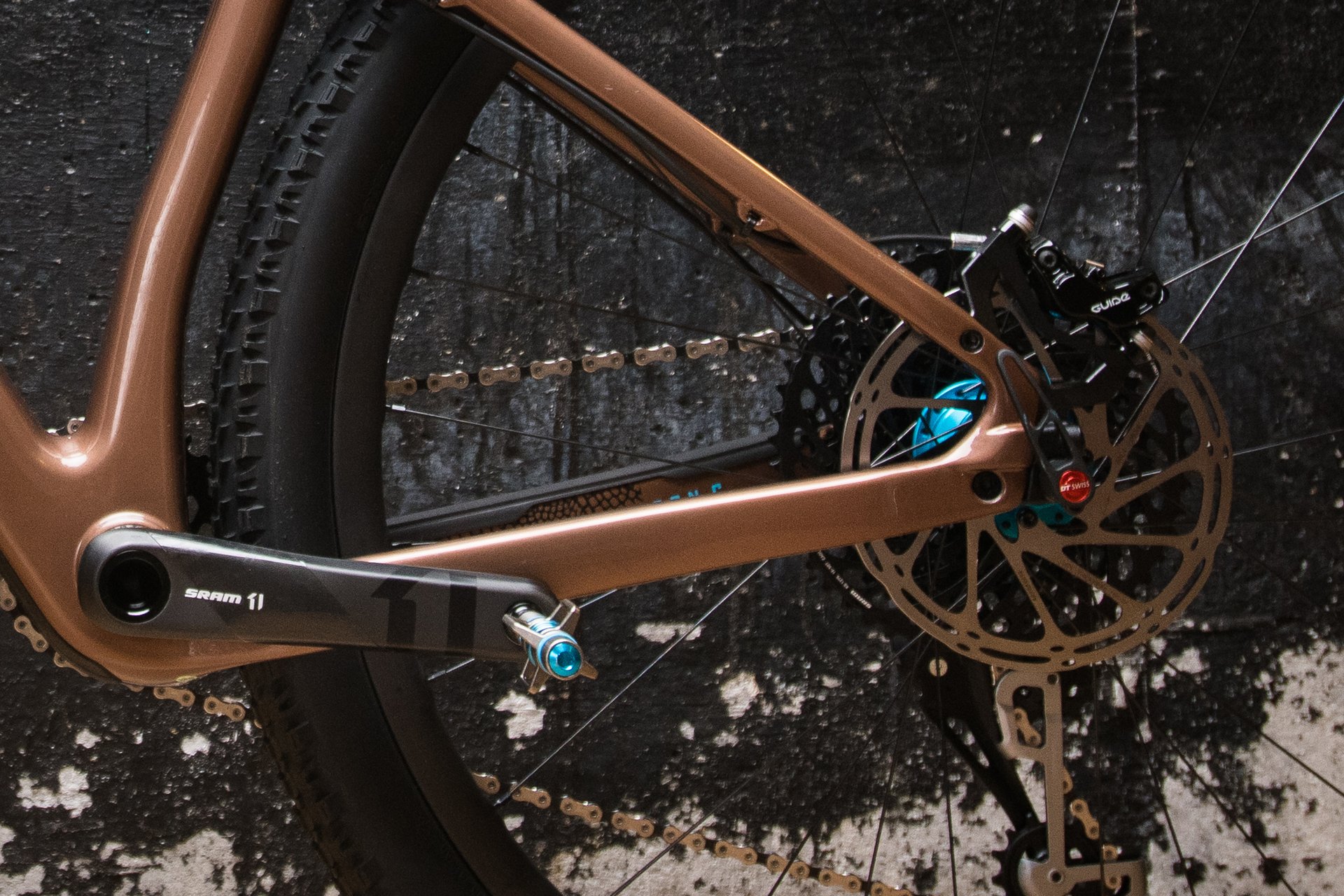
I haven't ridden the latest generation aluminum Chameleon for a long time but I remember its smooth ride. I have high expectations for this frame.
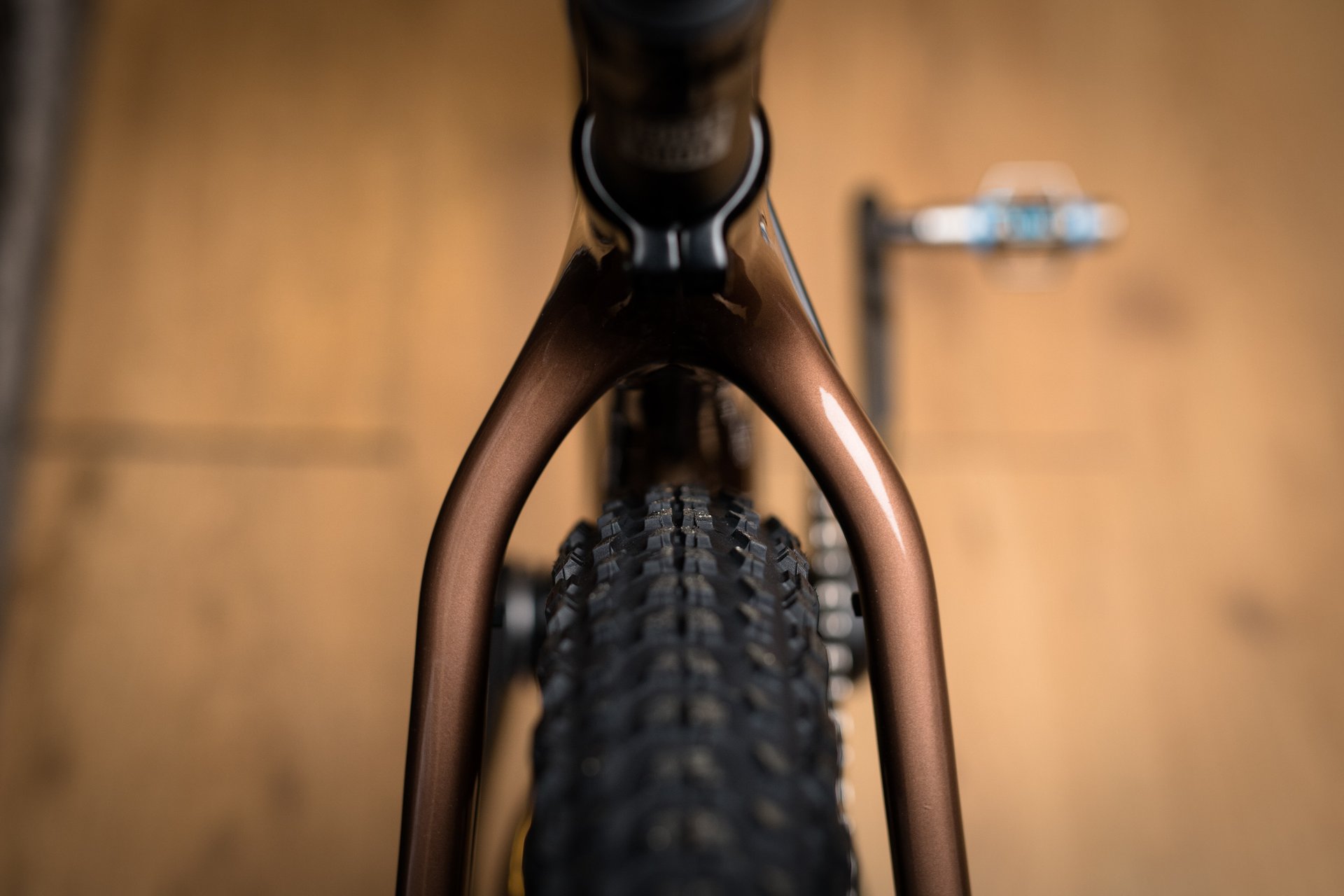
There's room for a lot more meat than the stock 29 x 2.3" tires. As a worldwide, all around, choice, the Ardent Race rear & DHF front is pretty brilliant stock spec.
Tire clearance is pretty massive. Santa Cruz lists the 29'er clearance as 2.5" and 27+ clearance at 3.0". A 29x2.5" tire on a 30mm ID rim will definitely fit with the chainstays set to the full-short 415mm length. I don't have a 27x3.0" on hand to compare. With the dropouts cranked out to the full 430mm rear end length I'll be interested to see how big of a 29" tire clears - that's an experiment for another day.
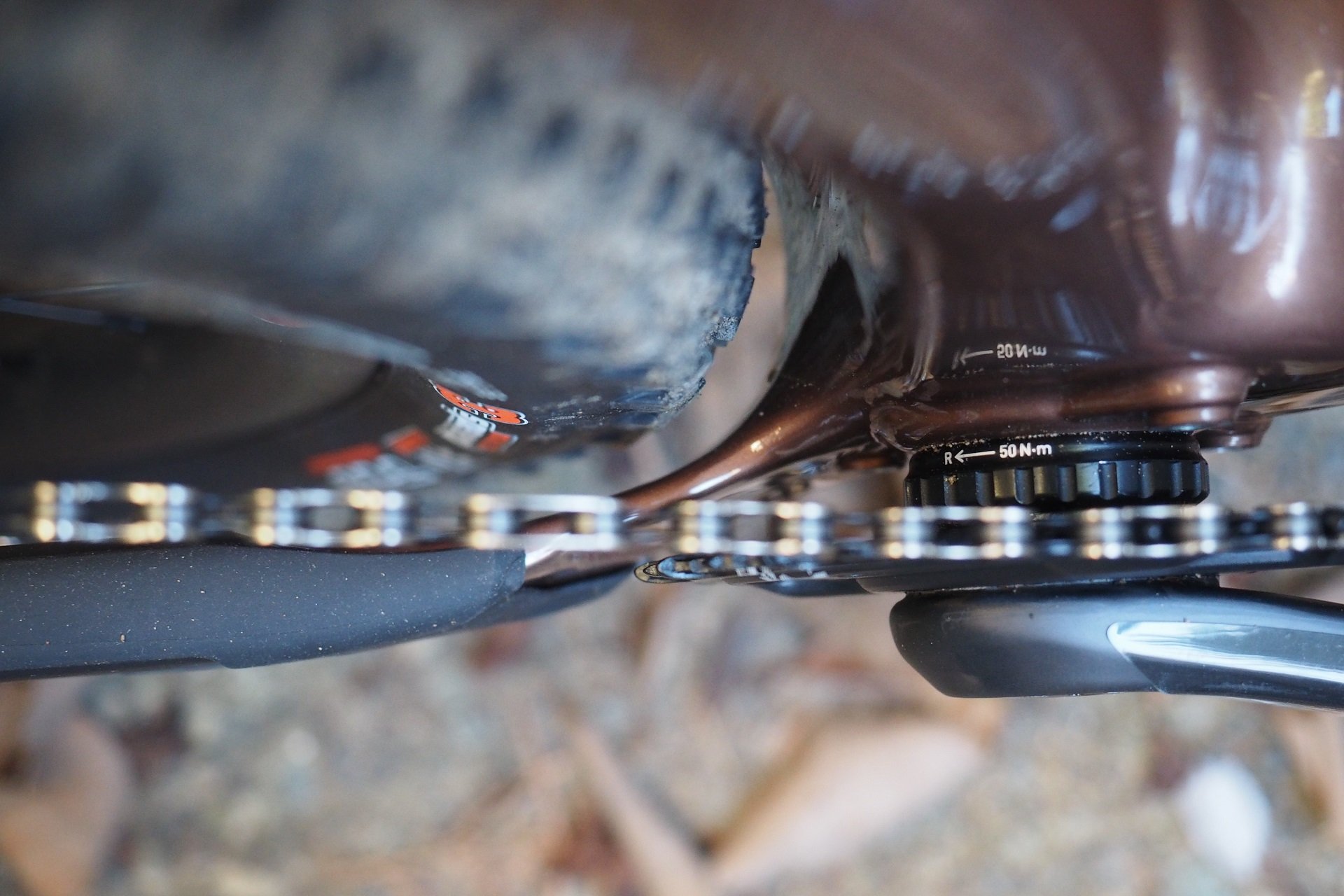
Drive side tire clearance. Stays set full-short (415mm) and a 29x2.35" Maxxis Ardent Race tire.
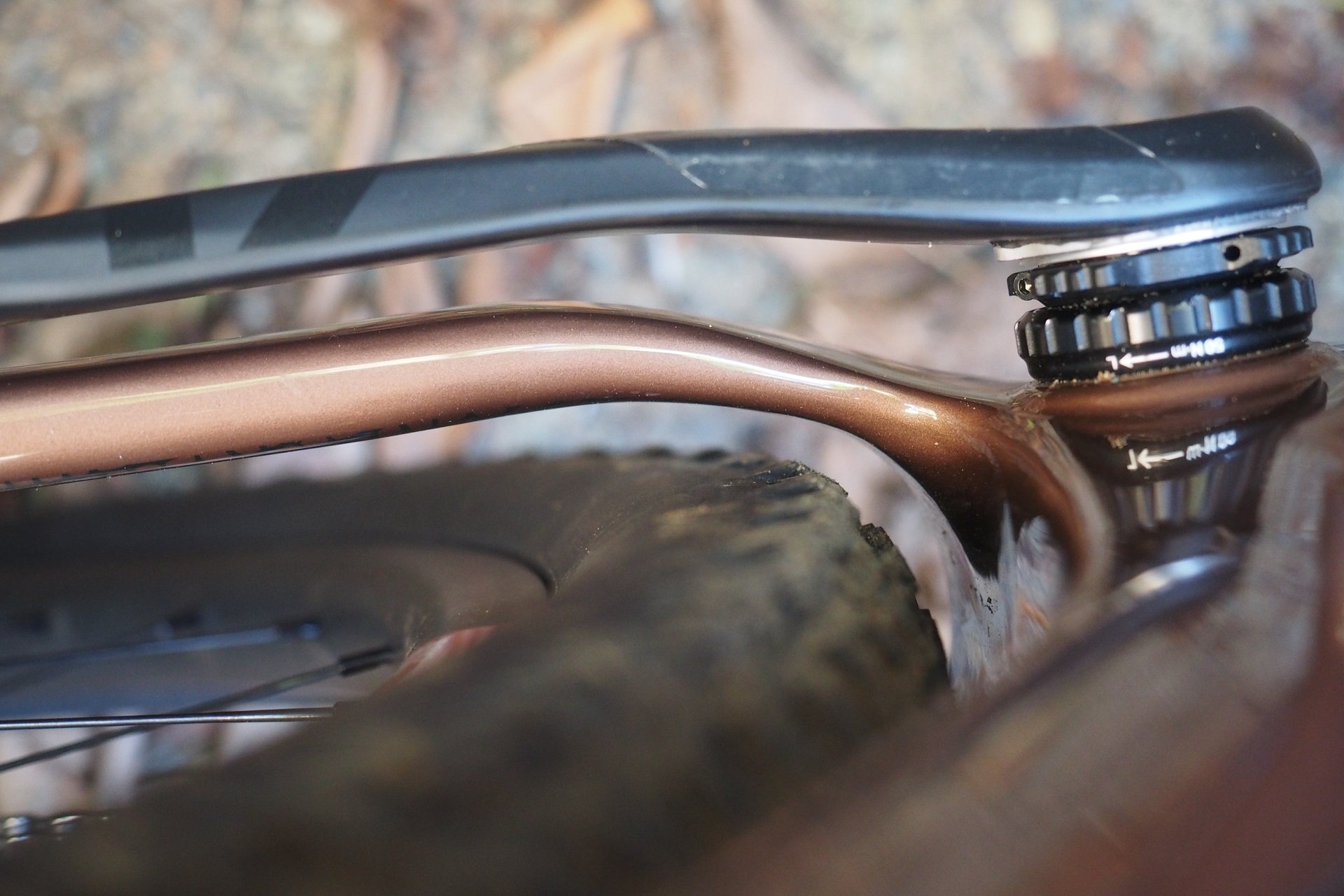
Non-drive side tire clearance. Stays set full-short (415mm) and a 29x2.35" Maxxis Ardent Race tire.
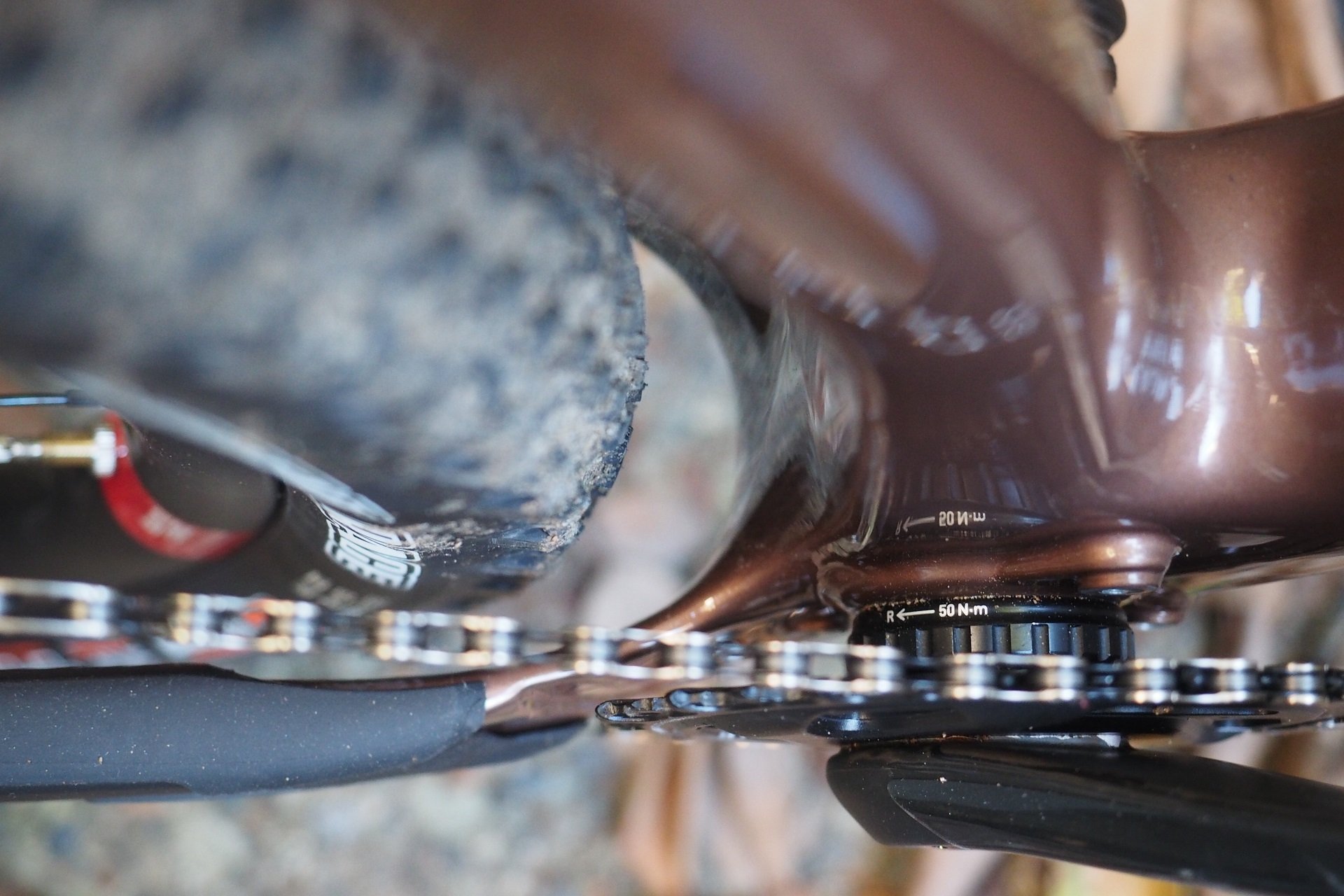
Drive side tire clearance. Stays set full-long (430mm) and a 29x2.35" Maxxis Ardent Race tire.

Non-drive side tire clearance. Stays set full-long (430mm) and a 29x2.35" Maxxis Ardent Race tire.
Hope
One of the things I love about this Chameleon right out of the box, and I'll discuss spec a bit more below, is the upgraded wheels. I'm actually not weighing in on the Reserve rims at all at this point, you can read AJ's thorough review here, but rather the Hope hubs.
I love a quality rear hub and to me, it's an upgrade I'd take over a cockpit, rear derailleur, etc. I'd love to see the S-level Chameleon A & C bikes also rocking a hub upgrade, just with aluminum rims.
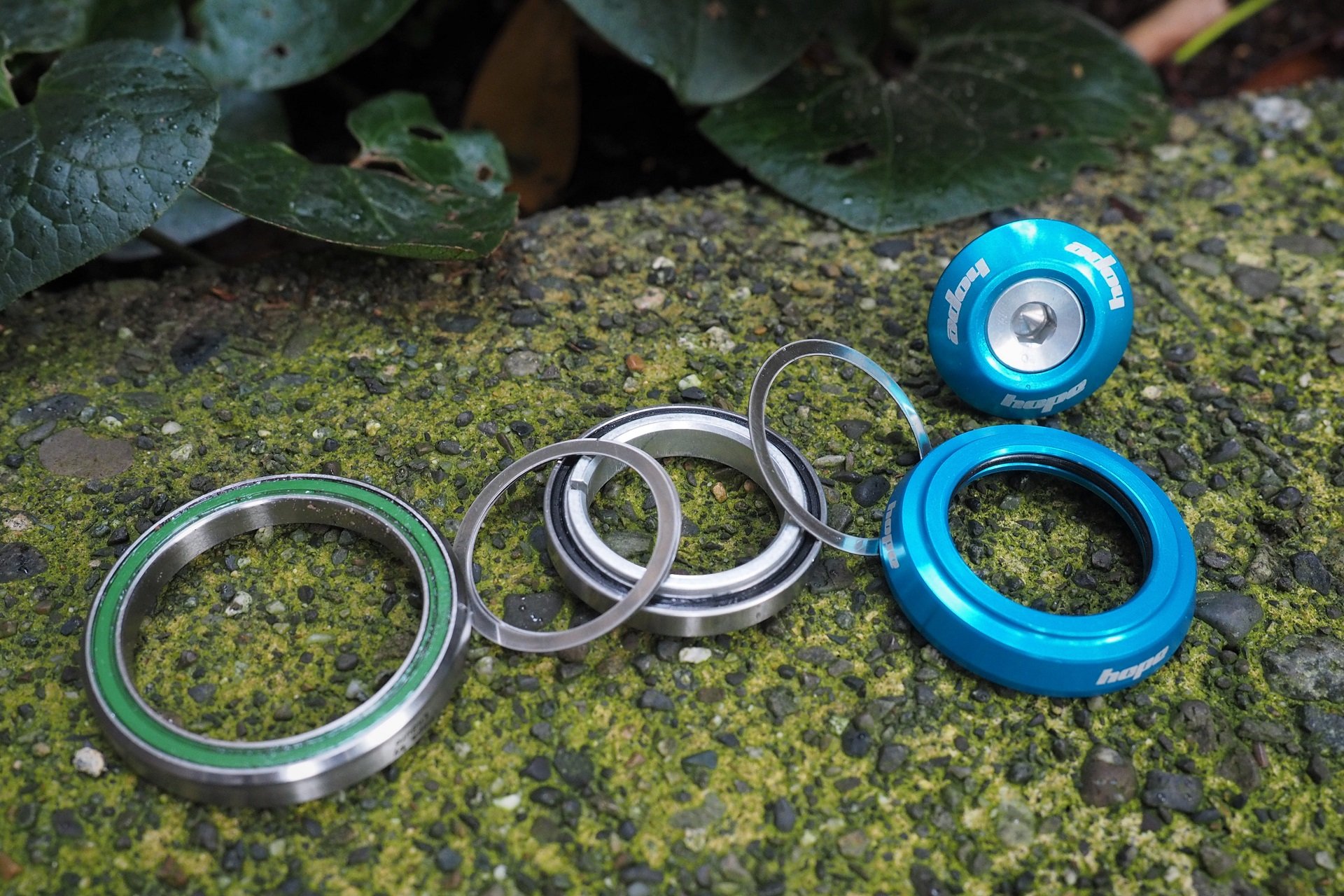
The Hope headset is an upfront expense that should pay for itself by lasting forever. Photo: AM
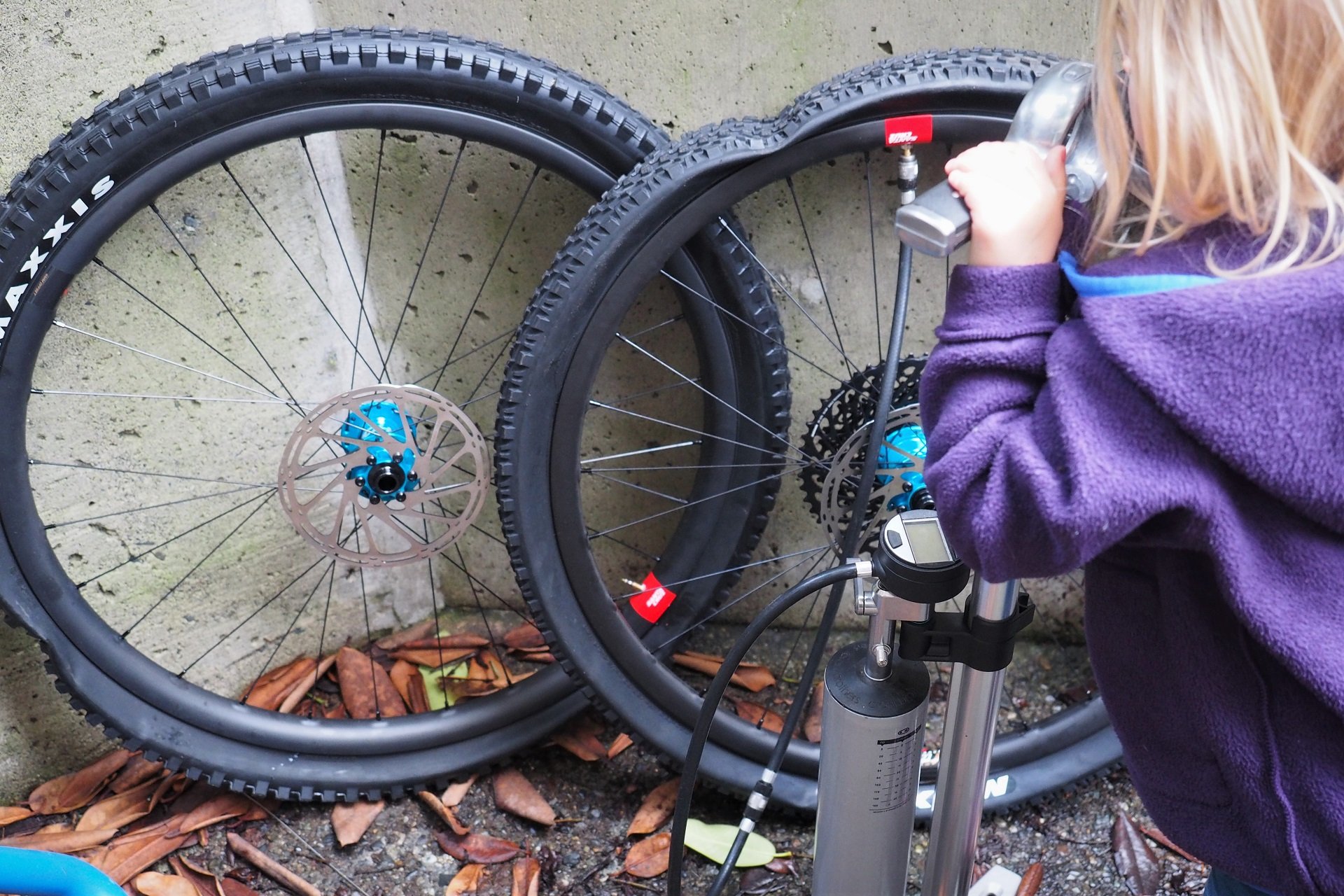
The Reserve wheels are easy to inflate tubeless. Check out AJ's review for more information. Photo: AM
For those who prefer a faster-engaging hub, Hope sells trials internals which deliver 4.1° of engagement with an 88t setup but I haven't been able to confirm that those guts are compatible with these Boost hubs. As it sits now many riders will be perfectly happy with the okay 8.2° of float. For the custom frame-up build, Project 321 makes an awesome, and equally turquoise, hub with 1.66° of engagement.
The headset is also quite a nice looking piece with quality bearings, micro-spacers included. This is my first Hope headset experience but I suspect that along with King and Wolf Tooth it's among the best options for a drop-in.
All in all, it's cool to see Santa Cruz focusing the build dollars on a few key performance upgrades as opposed to the general rising prices raise all components one level which ends up requiring a lot more investment to notice a real difference on the trail.
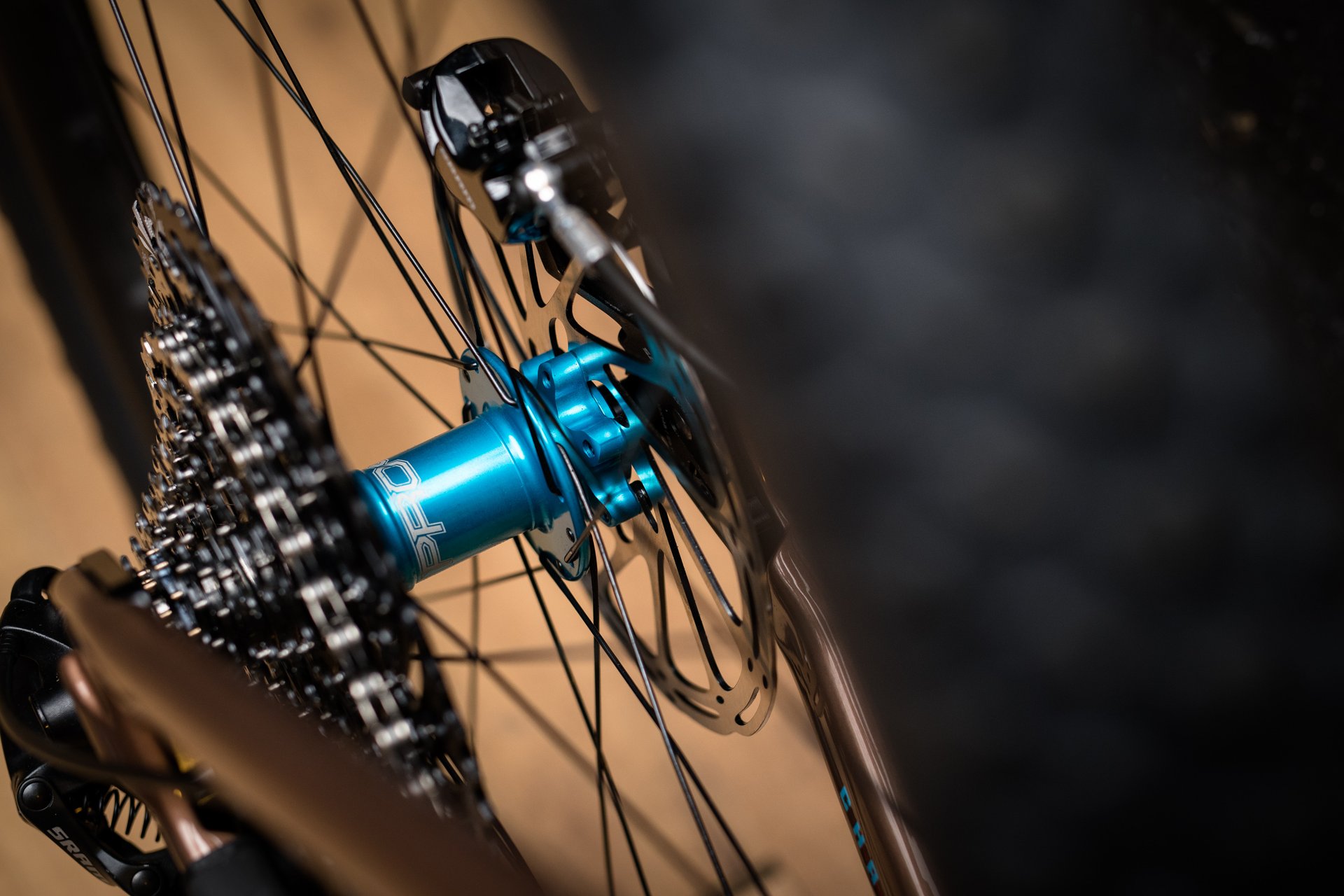
The standard Hope hub delivers an okay 8.2° engagement from the 44t x 4-pawl drive system.
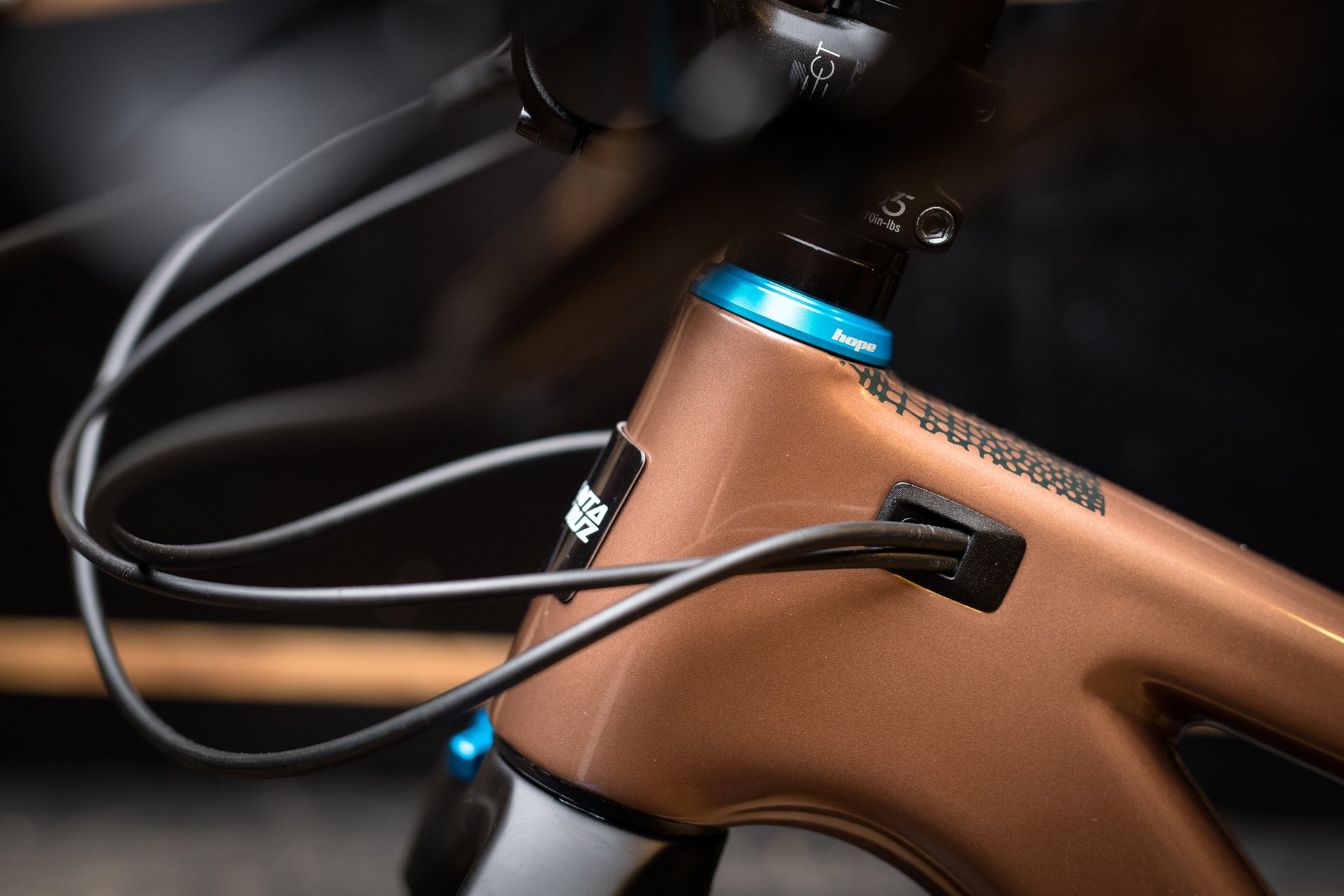
I'd prefer an internal, press-in, headset for the options it provides but the Hope spec and top quality carbon construction are nice.
Spec
Everyone's a critic. It's always easy to point to the personal preference changes I'd like to see with any bike within any price range. For example, I'd prefer to dump the questionable performance gains of carbon cranks in favour of carbon brake levers and the Reverb is far from my preferred dropper post at any price, even with the much more ergonomic Spruce Goose inspired remote, due to the after-sale cost of ownership.
The counter argument is that I'm sure many folks would choose the carbon crankset for the significant weight savings that are difficult to make up elsewhere and the Reverb is still the first name in dropper posts for a tonne of riders.

It's hard to argue with most the rest of the spec with Guide R brakes and GX Eagle being about as common as it gets these days on mountain bikes. Race Face's Aeffect R cockpit has a neutral fit that looks great without being a Gucci product that a shop won't want to take back when you want to swap in your personal favourite.
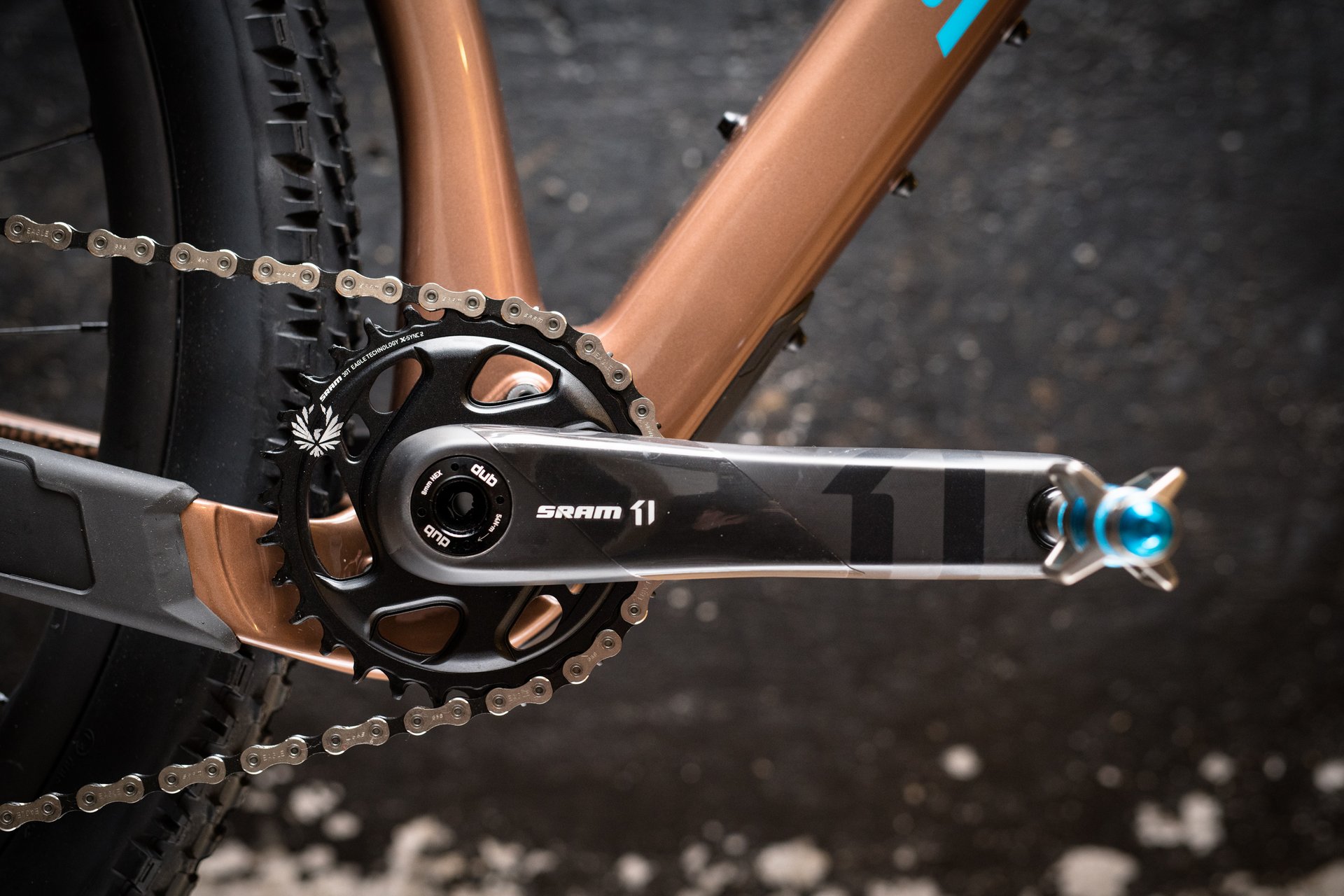
The carbon Eagle crankset drops over 150g compared to GX Eagle. It all adds up to a lightweight but capable 12.16 kg package.
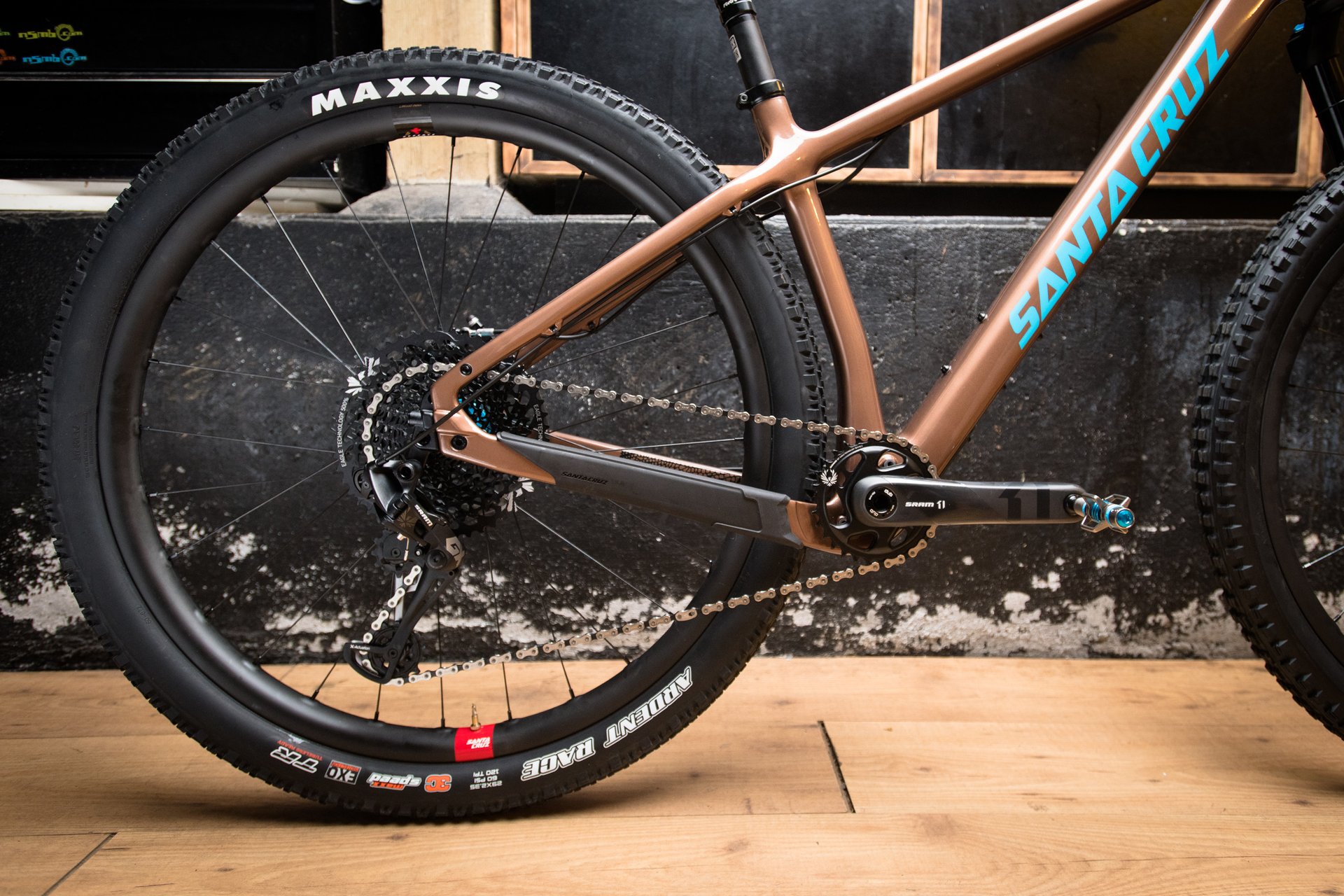
12-spd GX Eagle with a 10-50t cassette and 30t ring. What's left to be said about SRAM's umbrella drivetrain?
The one beef I have that transcends personal preference is Santa Cruz's choice of the Fox 34 Performance fork. Now, I know what you're thinking - what's a basic Fox Performance-level fork doing on a 5700 USD hardtail? A lot of the spec dollars on this bike are going into the frame and wheels and it's a hardtail so I wasn't expecting a World Cup or EWS level damper.
It may be a different story with speeds a rider is hitting on a new Bromad, but here a reliable workhorse fork that feels great at hardtail speeds, provides good small bump compliance, stands up in the steeps, and is easy to maintain at home would be a great choice. I'll gladly trade a few fork knobs for the Hope, or similar quality rear hub, and headset.
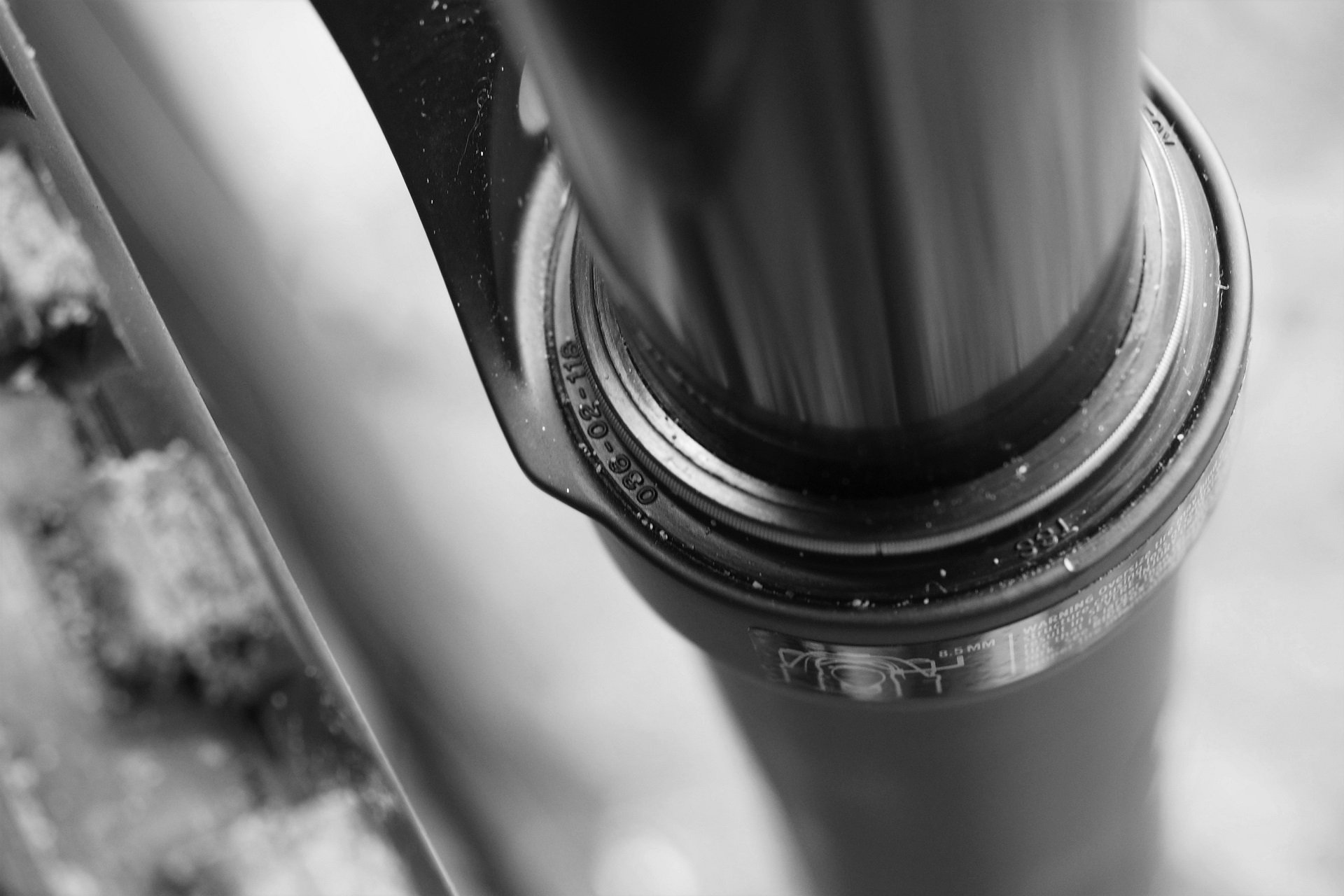
I think I've traced my fork issues to the stock main seals, which are not the excellent SKF-made low-friction units commonly associated with Fox forks. Photo: AM
Unfortunately, out of the box the 34 really doesn't feel good. It appears Fox let their accountants design this fork. The from-new-performance issues seem to be entirely related to the decision to forgo arguably the biggest upgrade to Fox forks since they were introduced in 2002; SKF-made low friction seals that Fox popularized and many brands now use. That's a dollar - or more likely cents - decision.
The good news is that a basic lower service and a new pair of SKF-made, low friction seals should have this fork singing a different tune. The basic Grip damper and new Float air system both receive good reviews so it could potentially be a good fork. That is, of course, a cost that someone is going to have to cover.
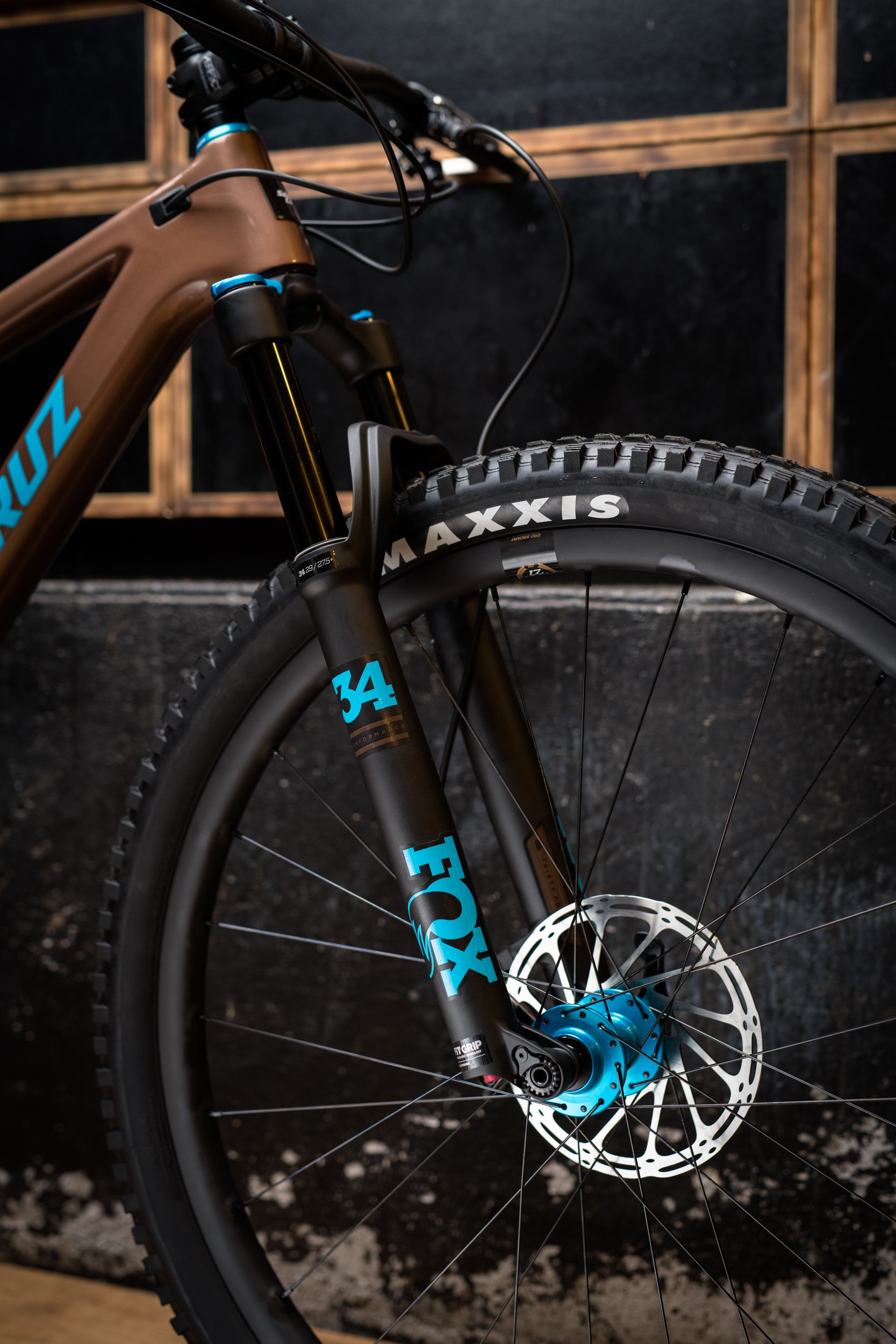
I'd prefer to see a similarly colour-matched RockShox Revelation RC up front on the Chameleon.
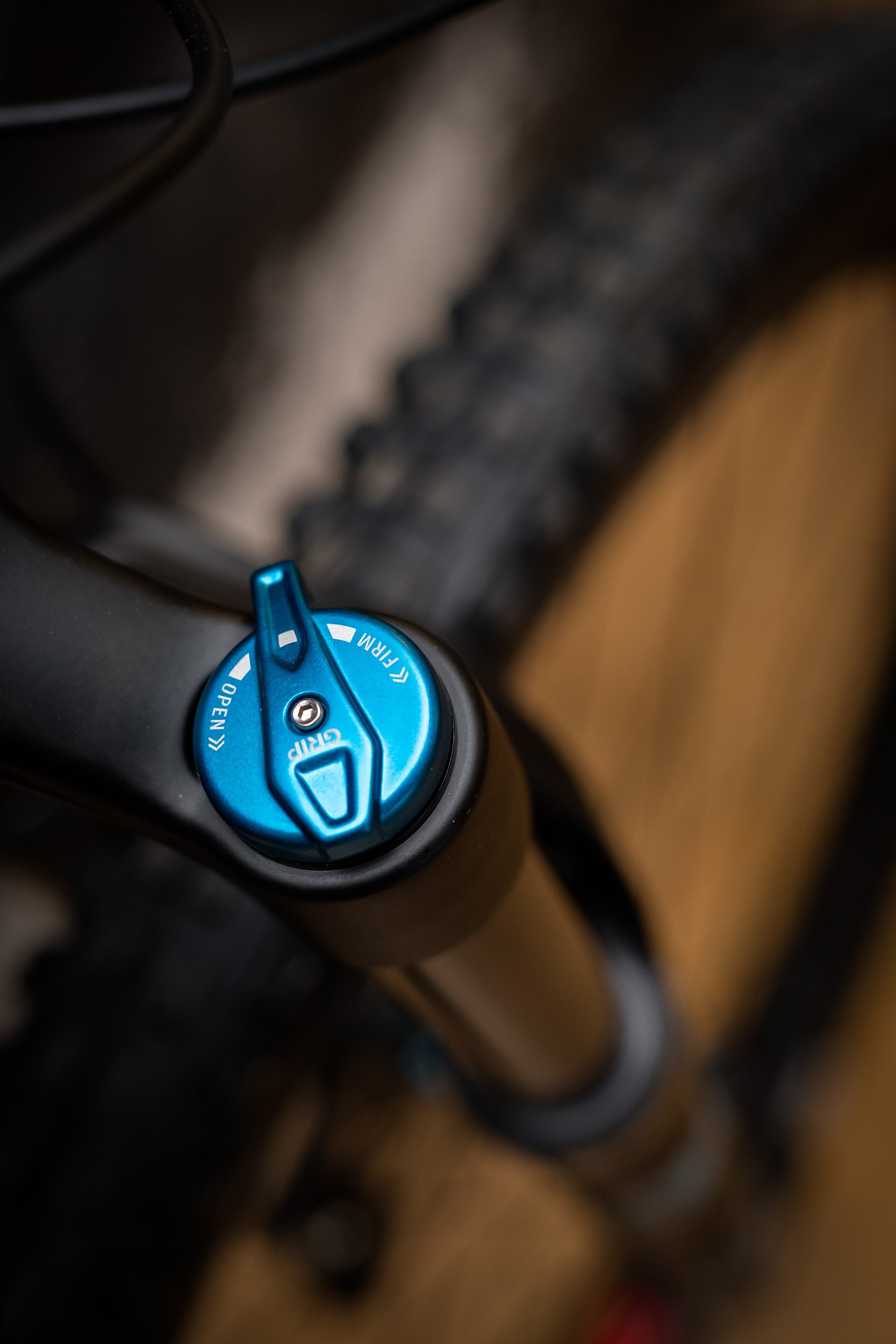
Lots of folks have great things to say about the basic Grip damper, so the good news is the Performance Fox fork is seals and a basic service away from being better.
If Santa Cruz wants to go totally crazy and swim outside the Rock-Fox pool, there are other great options on the market.
Single Speed
This is my very first time reviewing a bike that I'm glad the company in question didn't try to deliver some awesome min-maxed combination of an XTR shifter, SLX rear derailleur, and SunRace 11-50t cassette or the like. The beauty of the belly button drivetrain is that the universe does not need any more ink being spilled on GX Eagle.
That means I can pull off the pie-plate and mini-trencher and ride the Chameleon in its obvious natural state. I had a premonition this day would come, so months back I asked Uncle Lou at Obsession: Bikes to order me a Problem Solvers Zinger for just such an occasion. No faffing about with different freehubs required.
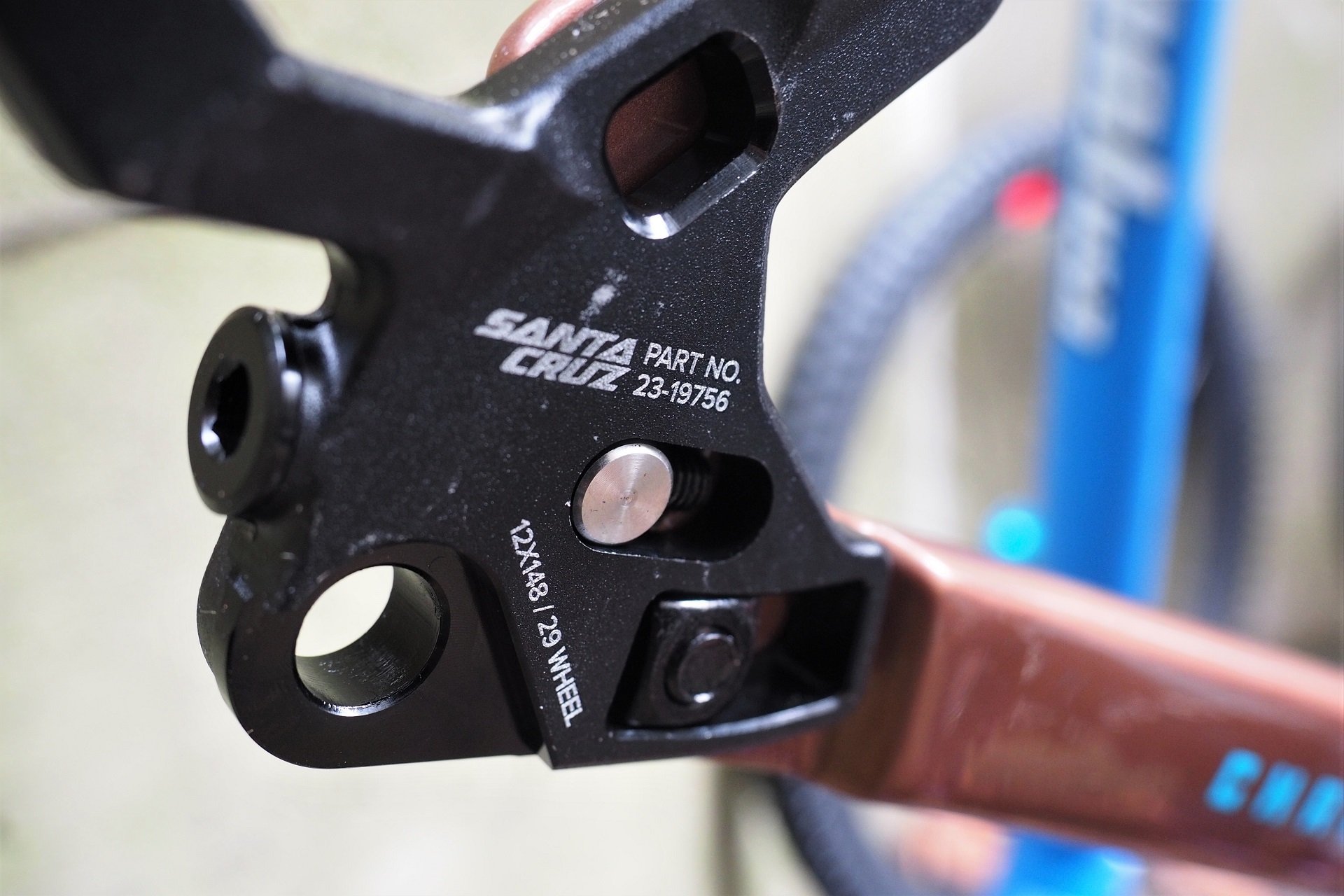
As I noted with the aluminum Chameleon, Santa Cruz's adjustable dropouts are excellent in general. Photo: AM
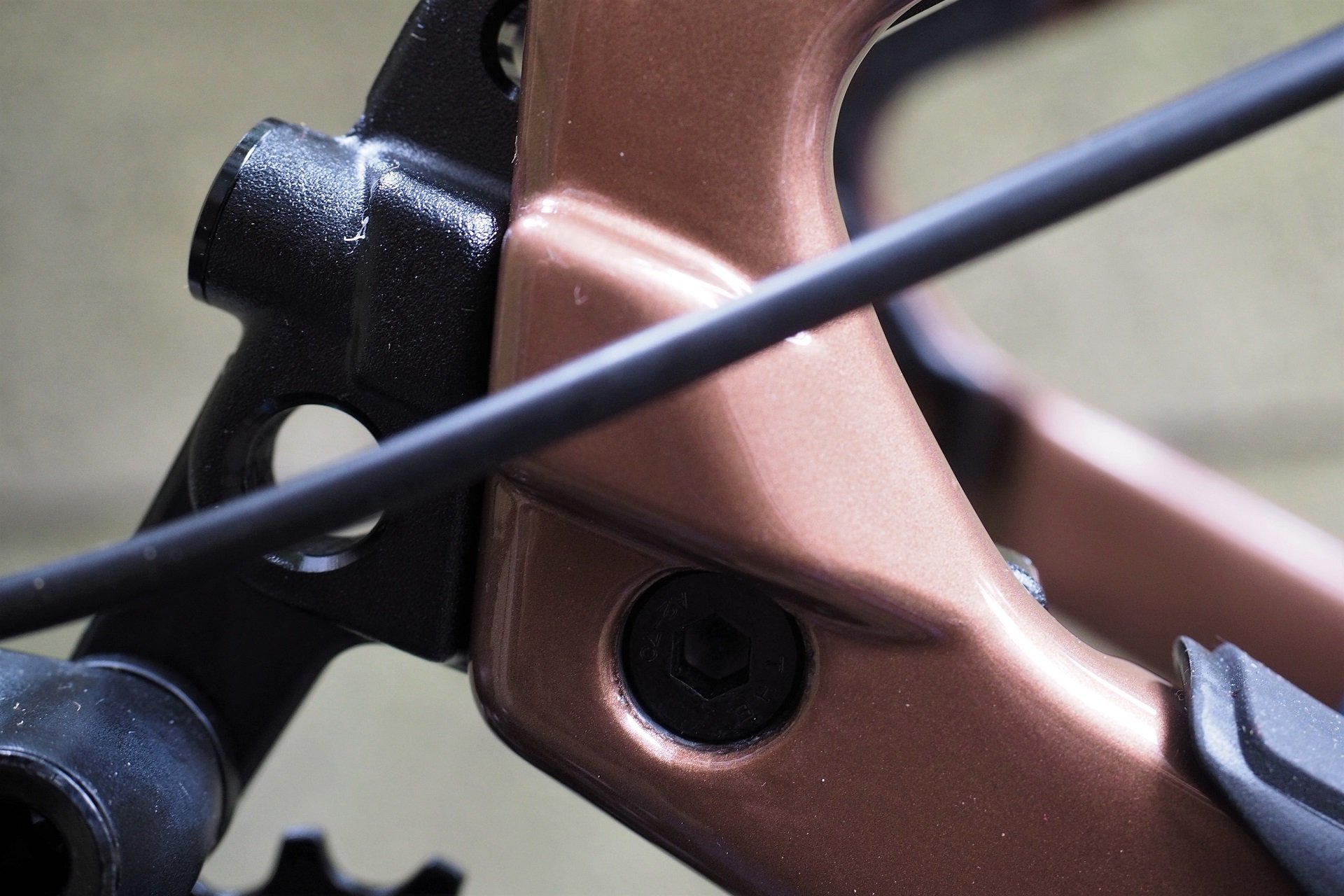
Compared to the carbon competition, they're bar-none the best system out there. Nice integration too. Photo: AM
In my weight weenie past I owned some seriously light single speeds from Niner and Trek (Gary Fisher) but compared to the geometry on the Chameleon they were basically gravel bikes. This thing will hit a similar weight to those XC rigs while sporting a slacker head tube angle than a Honzo. The range of seated positions is also awesome for dialing the right posture to push a big gear up the trail and spin like an idiot on flat pavement.
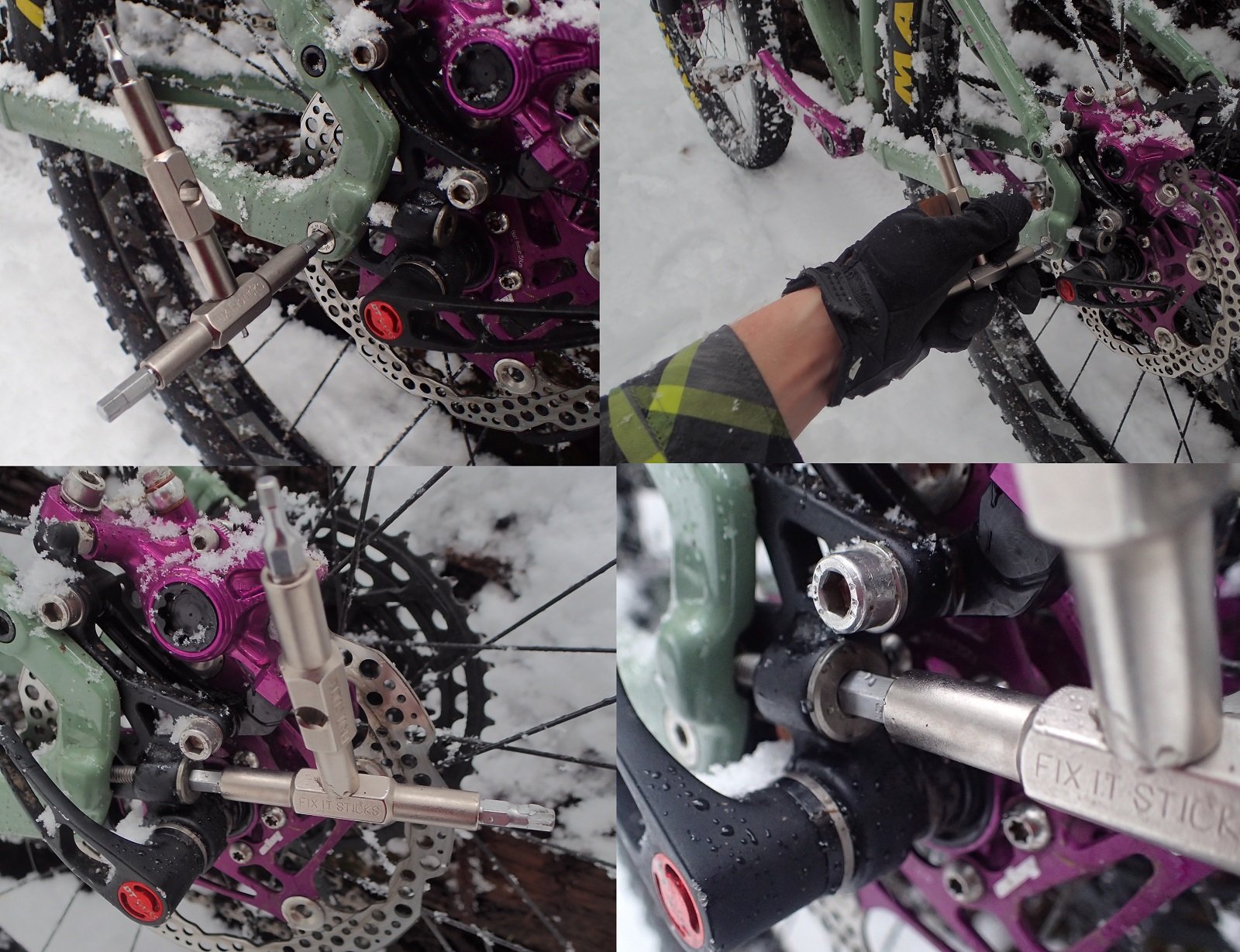
Whether tensioning a chain or changing the rear centre (415-430mm), the Santa Cruz system is awesome. Particularly when compared to other carbon bikes. Photo: AM
I love the Paragon Rockers on my personal bike, but when it comes to carbon fibre frames, Santa Cruz easily has the nicest system on the market.* I'll play with gearing to hit a ratio I like that also stretches the Chameleon closer to its long chainstay setting of 430mm. For those who like to run things as short as possible, the combination of tire clearance and 415mm stays is impressive from a carbon machine.
*In all fairness Trek makes a solid effort with their Stranglehold system but the Chameleon is next level.

Can't wait to get that pie-plate and trencher off. For a cleaner aesthetic sans hacksaw-and-file there is a 1FG-specific dropout available from Santa Cruz.
First Rides
Santa Cruz has a long history of equipping bikes with WTB saddles and WTB has a long history of making some of my go-to thrones. Unfortunately, the Silverado that comes stock on the Chameleon is not one of them. Saddles, like grips, are one of those personal preference items I half expect to change with any bike but it did leave me looking back to when most of SC's bikes came stock with the very neutral fitting Pure V.
Other than putting on my much loved WTB Koda saddle (review pending) and a set of modified Crankbrothers Eggbeater pedals I've been riding the bike bone stock. I'm already willing to say it's the pre-eminent example of the do-anything carbon hardtail (sorry Honzo) but I'm not able to hail its ride compared to the aluminum Chameleon at this point.
Did I mention its impressivly light?
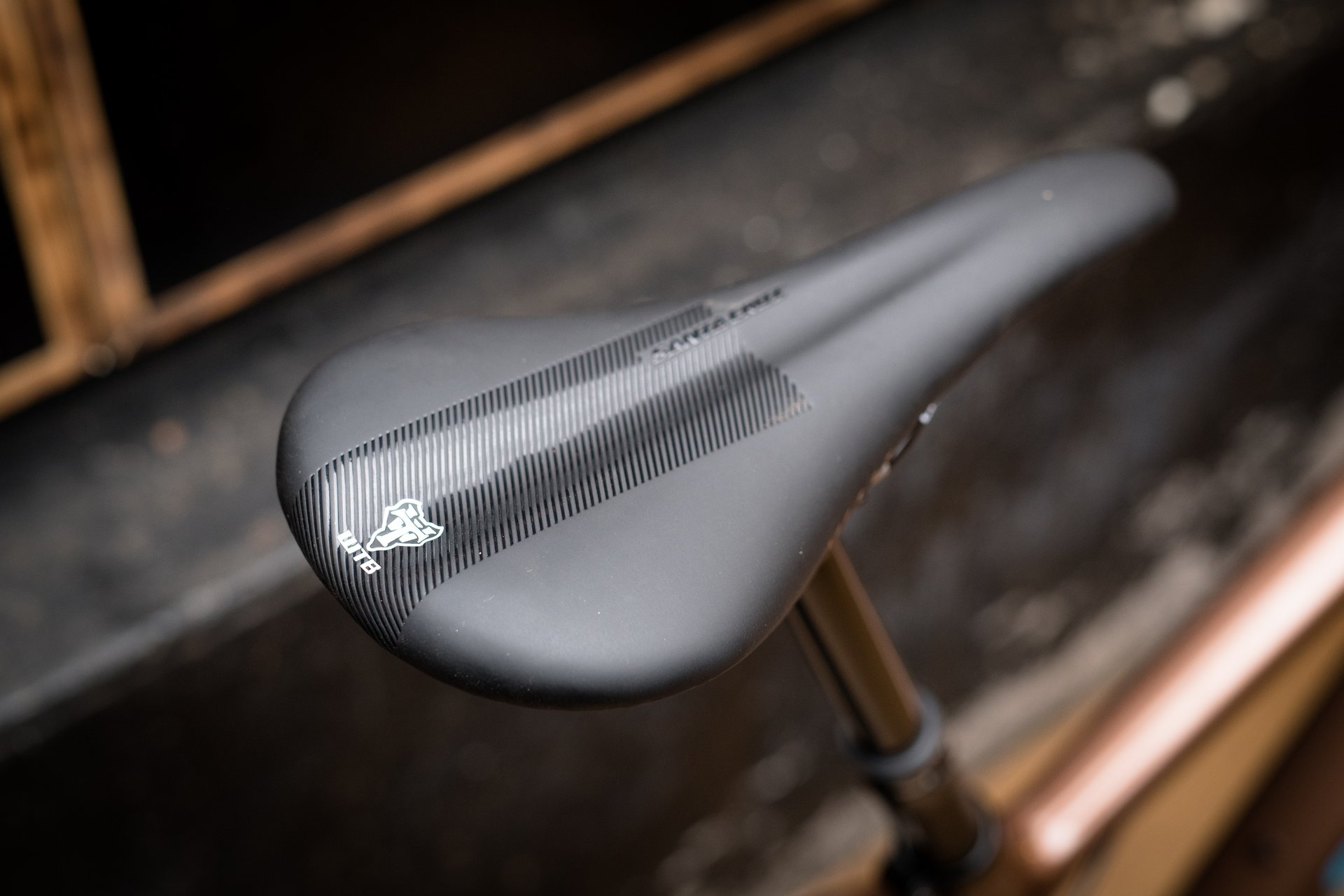
I'm a big fan of many WTB saddles, but the Silverado is not a long ride favourite sans chamois.
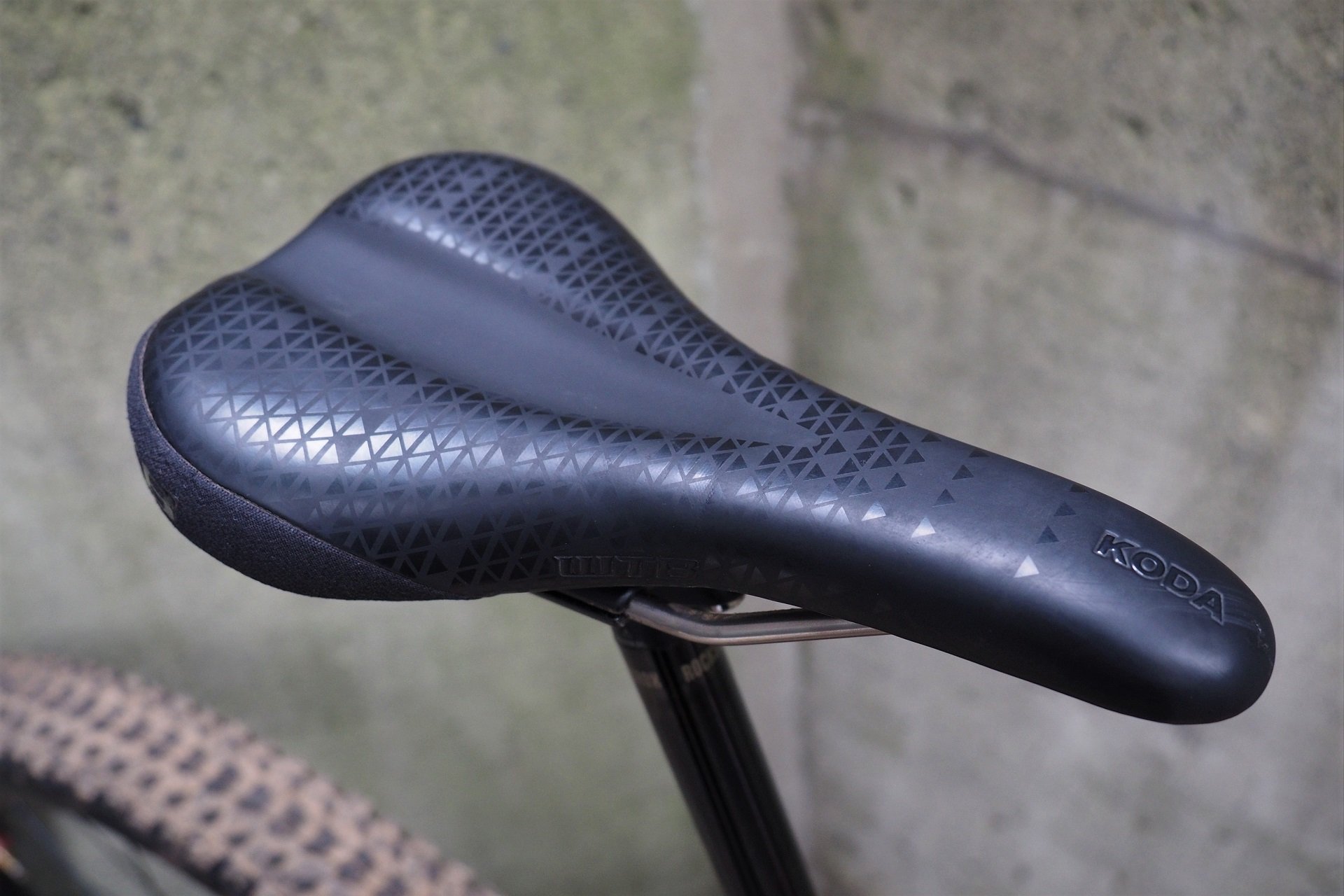
I've swapped to my much loved Koda. A WTB Pure-V would be a more neutral choice for spec. Photo: AM
If I was selling mountain bikes worldwide I would most certainly rip-off (riff-off?) the Chameleon's shoes. The 2.3" Ardent Race rear and DHF front are fast-enough rolling with good climbing and braking traction. Actually, I think when it comes to the braking and cornering performance of the DHF the 2.3" may be the best size and that's coming from someone who generally prefers more rubber volume.
As usual, the Guide brakes feel a bit underpowered even once bedded-in. I normally run 180mm front rotors on my hardtails* but it's a quick and easy job to bump the Guide up to a 200mm and for my 185lbs that's probably prudent.
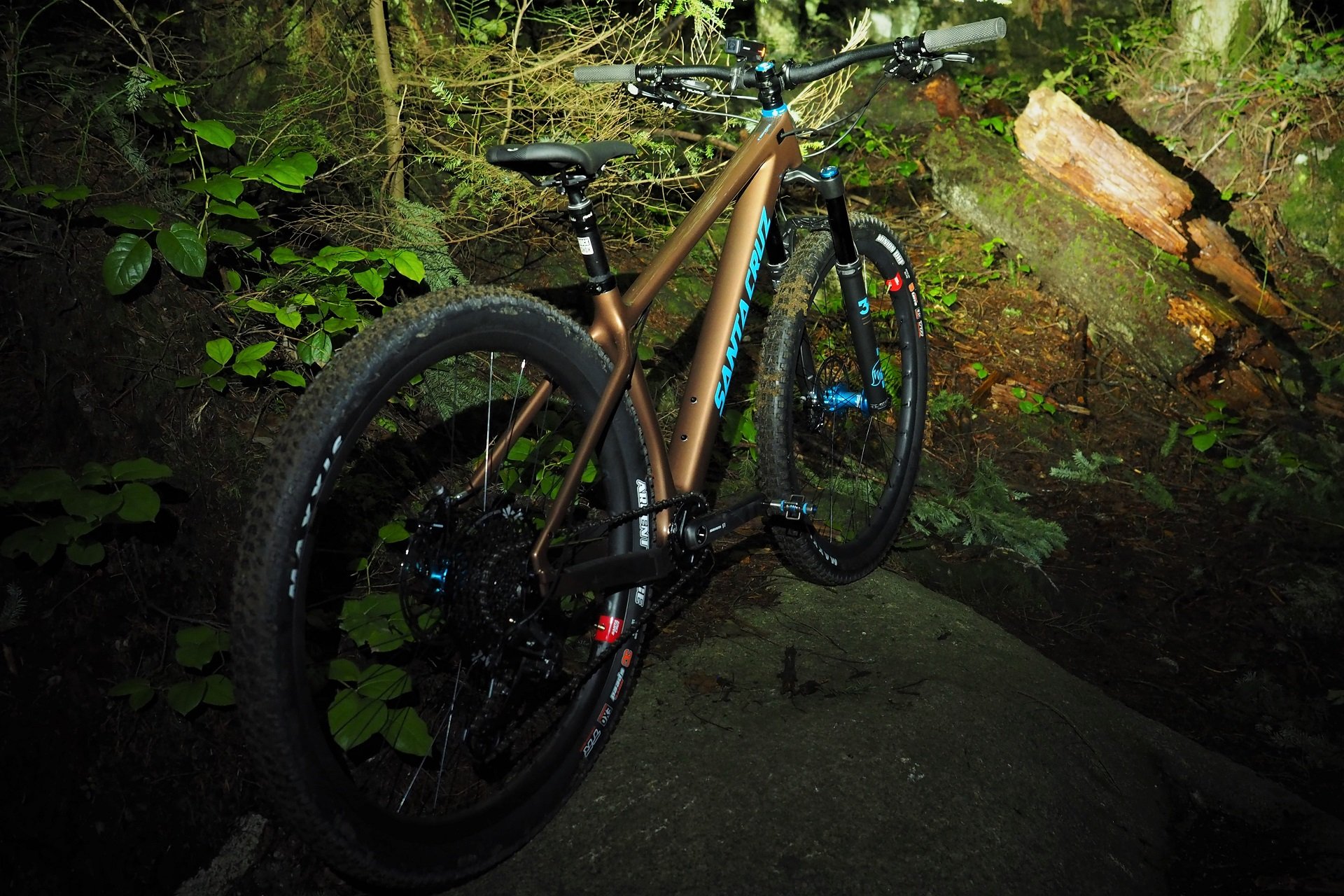
I'm so happy this bike is live now so that I can ride it during the day. Not that it's anything new, but all my rides have been night missions to date.
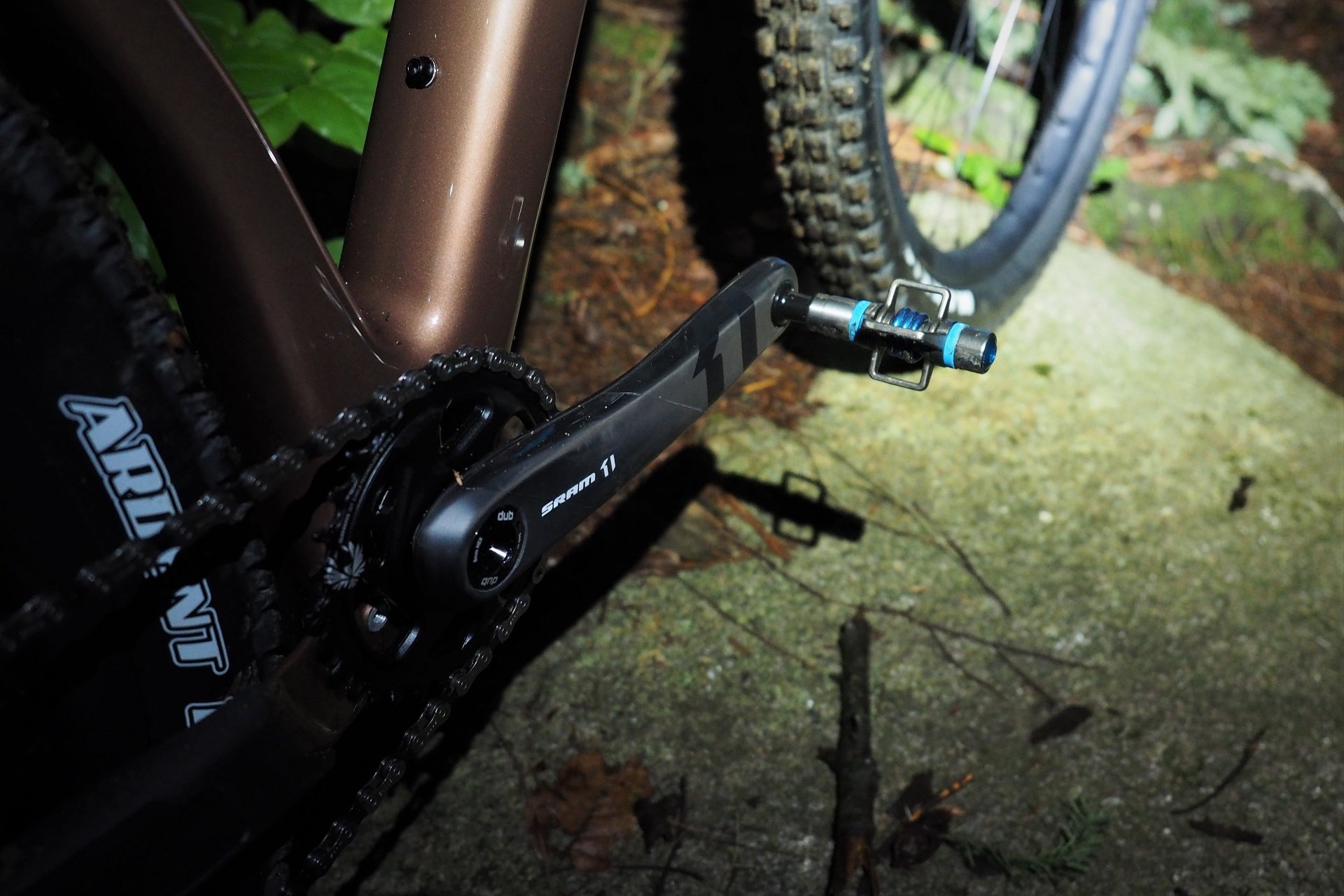
Power transfer is solid with the carbon crankset and frame. I don't have enough long technical descents to talk about relative stiffness or rider fatigue yet.
My standing position is a touch cramped with the 50mm stem but I can still say that the Chameleon climbs great seated or standing and it descends confidently even with the fork not functioning to my expectations - something I'll work on. A 60mm stem is in my future which should give me a better descending without compromising handling when climbing.
I have some big rides planned for the Chameleon before it goes back. Obviously, it's going to go up smooth single track like a horny duck toller but how's the relative all day descending? The aluminum Chameleon is impressive for, well, aluminum even with the lower volume 2.3" tires.

The underbelly armour may not be appreciated by every Chameleon customer but it suits the model's deep heritage as a bike for every offroad occasion.
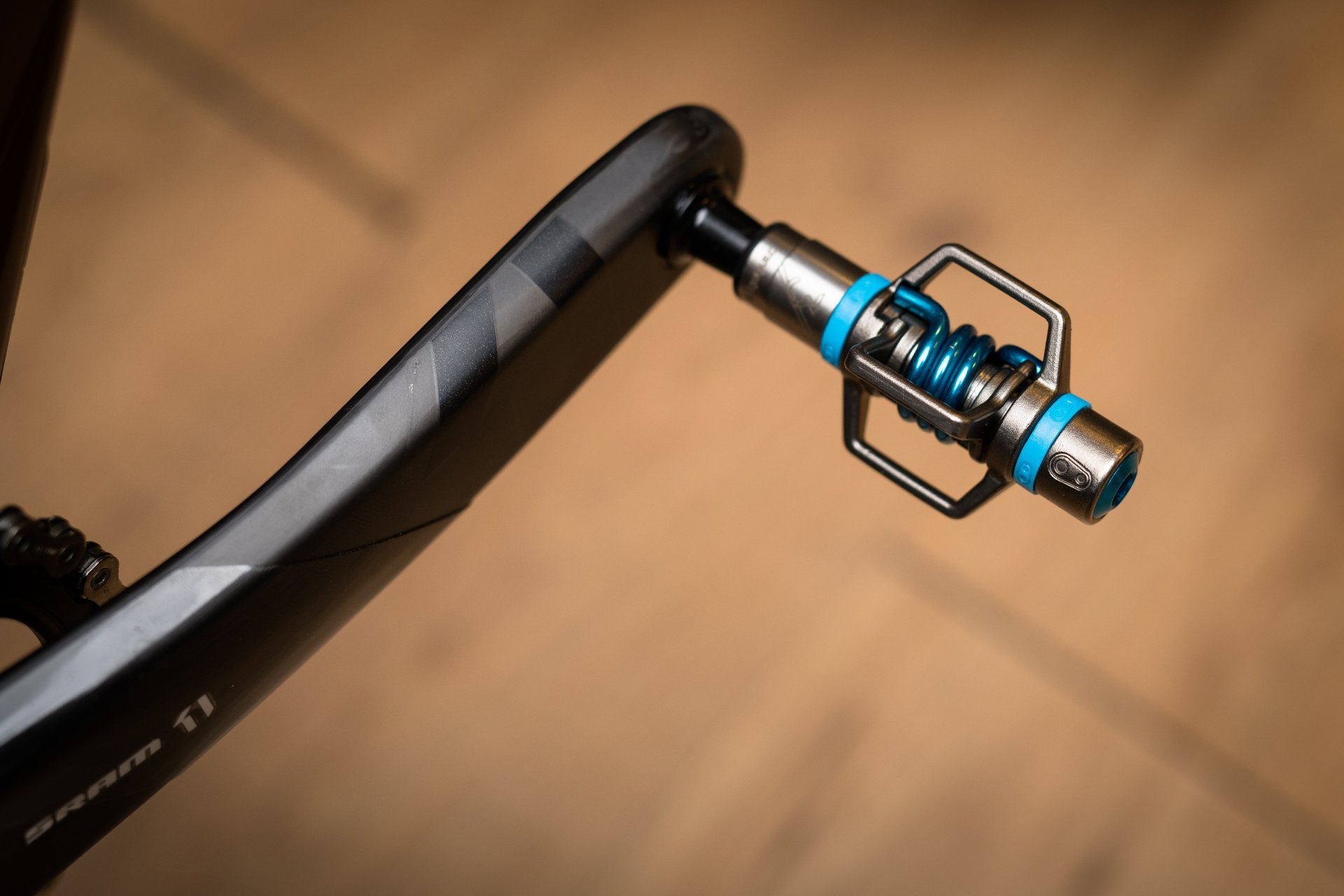
The Crankbrothers pedals are here for another project but just happened to match the Chameleon's turquoise accents.
I'm a couple rides in, but I've already concluded that if I was looking for a new carbon race/ride hardtail the Chameleon would be it. It looks great, the geometry is good, it honours my preference for a threaded BB if not a press-in headset, the dropouts are awesome, the tire clearance is good, it's adaptable between 29" and 27+, and the fit is good. At 5'9" I would have a hard time choosing medium vs. large but there will always be some frame size overlap based on preference.
The next step is to swap some parts, remove some cogs, fix the fork, and beat myself up for a few months to get a comparative picture of how good the carbon Chameleon C SE can be - and to see if I can pull off a full review of this bike without a cheeky Culture Club reference.
For more on the 1600 USD Chameleon C frame, 3800 USD Chameleon C S, and this 5700 USD Chameleon C SE Reserve please check out Santa Cruz Bicycles.


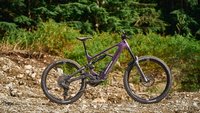
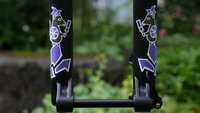
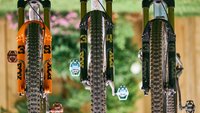

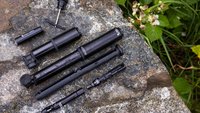
Comments
Alex D
5 years, 4 months ago
I have to differ on the weight sentiment. 26 pounds and change for a carbon hardtail with this build is heavy. A full-squish Tallboy is about the same. You'd never see this used for racing of any kind. I'm also not sure what to make of a build that prioritizes bling (that $100 front hub) over things that actually matter (the fork). Zero-mile upgrades shouldn't be required on a $5700 bike.
Reply
Andrew Major
5 years, 4 months ago
No company is going to mis-match hubs on a production bike so the front hub in a sense is the cost of getting the upgraded rear hub. That’s true if DT350 etc.
The drop outs are awesome but the system isn’t particularly light. I’ll try and weight the drop outs at some point - they could easily add as much as a Float DPS shock.
It also isn’t an XC race frame (SC has the Highball) it’s a Chameleon. But I can definitely see folks happily racing it (folks like me - not Nino) especially folks that race SS which is pretty cool for a bike with Honzo geo.
The fork is unfortunate but in terms of out of the box performance I’m sure if it came with the SKF low-friction seals it would be good for the application (120mm / hardtail).
Reply
Alex D
5 years, 4 months ago
All fair, though I still think the same about the fork.
How'd you like the brakes? I've heard mixed reviews on Guide R.
Reply
Andrew Major
5 years, 4 months ago
This sounds silly - I mean it’s a simple hydraulic system - but my biggest beef with Guides is I seem to get two sets, properly bled, same lever feel, and the power just somehow isn’t the same.
This is a good set. They’re still ‘underpowered’ compared to my favourites the MT Trail / Trail Sport and the Cura 2-Piston. I run those brakes with 180mm rotors up front and I want bigger here.
They remind me a lot of the Hope E4 actually. Great feel at the lever, easy to modulate, and just a bit gutless.
Thanks!
Reply
Bagheera
5 years, 4 months ago
Methinks I had a bike that came stock with two different hubs. 2008 RMB Slayer SXC 70. IIRC it was something that wasn' so rare in the times of 20mm axles and before the advent of color-matched wheelsets (do I look like I care about green accents on my rims?), but I may be mistaken.
Have to agree with Alex D on the price, though. My new full-susser (will be posted in the forums once it has arrived) will cost less. Carbon, GX, fork tuned to my weight/riding, Saint, Deity cockpit. Admittedly, crappy (let's say mediocre) wheels and no carbon except for the frame. Still, 5700USD for a GX and Fox Performance-equipped HT? Ouch.
Reply
Andrew Major
5 years, 4 months ago
Lots of companies used to spec a black Shimano rear hub with a black cartridge thru-axle hub. Certainly was the case on lots of old Rocky bikes.
Two thoughts regarding the pricing.
1) You get almost the same build on Chameleon C S at 3800 USD. The Reserve build difference is wheels, carbon cranks, headset. So really the big pricing difference is high end carbon wheels.
2) It’s hard to comment on relative value when it comes to carbon (I suppose the same can be said for any material.
Santa Cruz delivers unabashedly high end carbon frames. Whether C or CC level they’re a premium product. Trek, Specialized. I think the best explanation I’ve heard was Noel @ Knolly talking about the cost of just doing carbon vs. the cost of making a premium carbon frame when he was starting the Carbon Warden program.
Is that better? Worth spending more money on? Totally a personal decision.
———
One other aside - I know it doesn’t matter for anyone who won’t use the feature, but having had custom bikes built those rocker dropouts are also a premium over a static option. Everything adds up $$$$.
Reply
Bagheera
5 years, 4 months ago
Thanks for your reply. Even 3800 seems like a lot of money, compared to other brands, and I'm not even talking about conumer-direct. Not quite as outlandish as 5700, though.
When it comes to carbon, us consumers have almost no possibility to check quality. One LBS owner claimed BMC carbon frames were way better made than YTs. Of course he would, since he's selling BMC. But how would I go about veifying that claim? The Interwebz were no help (or my search skills lacking). Has anybody with some kind of idea what he's talking about ever taken apart a TURQ and one of the other Yeti frames to check if TURQ is more than a marketing spiel (not saying it is, but how could you check?)? With alloy frames, we may pay a premium for small, in-house manufacturing (Nicolai) and can check welds to some extent. But carbon? We have to believe whatever manufacturers tell us.
Reply
Andrew Major
5 years, 4 months ago
This is an excellent point - on road bikes its a lot simpler because weight and ride quality are easily measured metrics. For example with Specialized they do a good job of explaining what makes the higher number FACT products more expensive than the lower.
On mountain bikes most companies (other than Special-Ed, SC and Yeti...) just use ‘carbon’ often with made up marketing names that mean nothing.
Then take the example of Yeti and SC and for Turq or CC the only real benefit is same durability at a lower weight (compared to their own cheaper carbon bikes). The problem is that companies use can always make bikes lighter by using simpler designs and less material so without knowing the failure rate of say an IBIS dual-link bike compared to the equivalent C/CC frame it’s not really possible to compare cross-company carbon claims.
BMC does a decent job of showing what goes into their carbon products but since most brands don’t thats not really a usual comparable either.
I wish I could have recorded what Noel said because I was playing devil’s advocate and he had lots of interesting ways of thinking about it. At the end of the day the Carbon Warden is expensive af because he made it the best he could and basically that requires a level of faith when purchasing.
Years ago someone from Specialized told me that it’s easy to tell the difference between good carbon bikes and cheap carbon bikes because the good ones talk about the process. Obviously that’s totally biased as Specialized is a brand where a lot of information on their carbon construction/different materials is available if you want it, but it’s still one point I consider when looking at carbon frames. If a company has no info available on the material process I assume they either don’t know or don’t want to talk about it.
And again, that doesn’t mean their bikes aren’t good.
Sorry that’s a lot of words not saying much. Maybe someone should make a competing video with one of their employees dressed up as George Michael and the whole staff singing “you gotta have Faithhhhh!”
I hope you love your new bike!
Alex D
5 years, 4 months ago
The frame price isn't bad. Good name and warranty, cable routing, dropouts, stiffness, and paint quality. That's all worth a premium, even if it's a bit heavy.
The wheels are something else. There's a narrow sliver of XC bikes still on 2.1"-2.3" tires for which I might want a sub-30mm rim, but for literally everything else, I'd choose bigger. Even those undersized Maxxis 2.3" tires would do better at 30mm, with 2.35" and 2.4" in the mid-30s. The big 2.6" treads we're gravitating to work best at 38mm-40mm, a "plus" width not two years ago.
IME, the additional width adds sidewall stability and volume and reduces the chance of a burp. I'm aware some tires have narrow tread patterns that don't play well with wide rims, but this is changing quickly. If you're buying a bike for more than a season, I think it's hard to justify a high-dollar wheelset designed for yesterday's tires.
Reply
Andrew Major
5 years, 4 months ago
Thanks for listing the Santa Cruz specific pros. The way they mold in the internal cable guides is really cool. It's the only internal routing I think is as good as just running cables externally (that's a lot of engineering to get to where we were - but it also looks prettier). I'll weight the dropouts as I suspect that without them the frame's competitively light against other carbon trail hardtails.
--------
Apparently, you and I are in the minority of riders who prefer our +/- tires on Plus rims. Ignoring that lots of companies make a 35mm ID for a moment most companies producing 2.6" tires are suggesting they be run with 30mm ID rims. Maxxis recommends their WT (2.5" and 2.6") treads be used with 30-35mm ID rims
On my hardtails, I've been running 2.6" rear on 30mm ID and 3" front on 40mm ID but just through moving tires around (my personal bikes are fairly amorphous) I've ended up running both a WTB Vigilante 2.6" and a Bontrager SE5 2.6" on my 40mm ID rims (front wheels) and it's an equal or better experience in all conditions including tight/loose cornering where I assumed I'd be giving some predictability.
I talked to both brands and each has riders/staff who prefer the wider rim/2.6" tire combo but apparently it's not the norm.
I think with the Chameleon spec it comes down to a differentiation between the 27+ version (38mm ID rims) and the 29'er where the assumption is the 29'er will be used for bike packing, XC racing, pump tracking, long trail rides etc. I mean, personally, I'm wondering how big a 29" tire I can cram in the back.
Anyways, very interesting re. +/- tires and it will be interesting to see in a few years what ID rim bikes with 2.6"-ish tires are coming with.
Alex D
5 years, 4 months ago
There's such variability in how people ride that I'm sure someone, somewhere can make a compelling argument for narrower rims. I suspect it'd devolve into an argument for specific old-school tires on narrower rims, or for narrower tires in general. You have to actually want a big contact patch. Some riders chafe at the perceived rolling resistance. Others seem to think a lot of overhang protects the rim. I'm dubious of both. If we emulated motocross, rim width would be 60-70% of tire width, or about 41-45mm for a 2.6" tire.
Andy Eunson
5 years, 4 months ago
“Thanks for listing the Santa Cruz specific pros. The way they mold in the internal cable guides is really cool. It's the only internal routing I think is as good as just running cables external”
Does that mean the rear brake hose can only be run through the left side port? I run my brakes left rear and I hate having the hose on the left side. Aesthetic I know but ...
Mark Forbes
5 years, 4 months ago
Ummm...I raced my Alu Chameleon SS 2 days ago in an Enduro event, so I know at least one guy who will race his Carbon Chameleon when he gets it.
Reply
Andrew Major
5 years, 4 months ago
Building from a frame only? Moving parts over or full fresh? Stock bike with changes?
My tiny mechanic and I are doing the SS conversion this weekend and I’ve been doing some ‘if this was my bike how would I build it?’
Reply
ZigaK
5 years, 4 months ago
Re rear tire clearance: the seatstays usually don't pose a problem, the chainstays on the other hand do. It would be very helpful if every review included a shot of a chainstay and a chain in 30-50 gear.
Just my pet peeve.
Reply
Andrew Major
5 years, 4 months ago
Good call; I’ll try and grab that for you later today.
Reply
Andrew Major
5 years, 4 months ago
I added photos of tire clearance to the article in the geo section. Drive side and non-drive side with the stays full short (415mm) and full long (430mm).
Chain is in the 30x50t for all the photos.
Thanks
Reply
fartymarty
5 years, 4 months ago
Andrew, hopefully you are going to put the WW forks on to see if it is a truly "do it all" bike.
Reply
Andrew Major
5 years, 4 months ago
Ha, don’t know if it will be that long term a test. The fork on my Walt isn’t suspension corrected and I think my other one is ~20mm too short AND I don’t have a reducing race compatible with Hope.
If the opportunity comes up I’ll make it happen!
Reply
Mark Forbes
5 years, 4 months ago
Great review. I have been waiting for this bike since I got my 2018 Chameleon dialed in. I do wish it came in a better color (nude or black), but if it is lighter, absorbs chatter better, and puts down power better than the Alu version, this could truly be the best frame on the market right now.
Reply
Andrew Major
5 years, 4 months ago
Thanks!
I’m not holding myself up as a fashionista but I really like the colour. Especially with some tastefully applied anodized turquoise accents (I’d add a seat collar).
Reply
Ac
5 years, 4 months ago
Did you just imply that you can upgrade standard Hope hubs with a 88t ratchet?
I only know the 88t to be available in the singlespeed/trials model.
That would be cool if true.
Reply
Andrew Major
5 years, 4 months ago
I think I hedged it a little better than that!?!?
I’m not a Hope aficionado so I don’t know anything first hand - have never stripped down their regular or trials hubs myself. That said if the difference is just at 88t vs. 44t drive ring then it could be worth following up on for the Hope customer who’d like 2x the engagement points. I know of a few people riding SS on the trials hubs with no failures.
Reply
Vincent Edwards
5 years, 4 months ago
Nice to see a carbon hardtail w/ proper SS dropouts that will run a 142 SS hub.
I do wish they had gone a bit more modern on the SA- (if nothing else to support slight over-forking) - but I'll try one before I jump to conclusions.
I'm looking forward to the long term SS review! Let us know if you get any conclusive answer about the 88t option for a Pro4 hub- I hope you're right!
Reply
Andrew Major
5 years, 4 months ago
I wasn't clear enough on the Hope hub. They're not a hub I would spend my own money on whether 8.2°, 4.1°, or better engagement and I've never had luck communicating with the company so I'll leave the guts-swap question/follow-up to a potential customer looking for higher engagement points.
Rather than the seat angle change (which makes a lot of sense for many of the Chameleons applications) I'd love to see a 44/56 press-in headset for over-forking. Being able to run a Works Components angle set to maintain the rest of the geo while running a longer fork/slacker HTA is awesome.
I've SS'd the bike and I'm really happy with the ride. The only potential pitfall I've come across is the dropped chainstay limits gear combinations. I'm running 32:22t which is great for around here in the winter but if I wanted a harder gear I'd have to go up to a 34t ring to get the chain to clear the stay.
All that considered - I think the tensioners are awesome, the geometry is awesome, and this has the potential to be the best SS carbon frame on the market.
Reply
brgointa
4 years ago
Thanks for the great review! I'm 5'5" on a good day and am in between a Small and Medium frame. I do feel a little hunched over on some smalls but I guess that could be fixed with a longer stem. Do you have any suggestions with the Chameleon sizing? Cheers
Reply
Please log in to leave a comment.